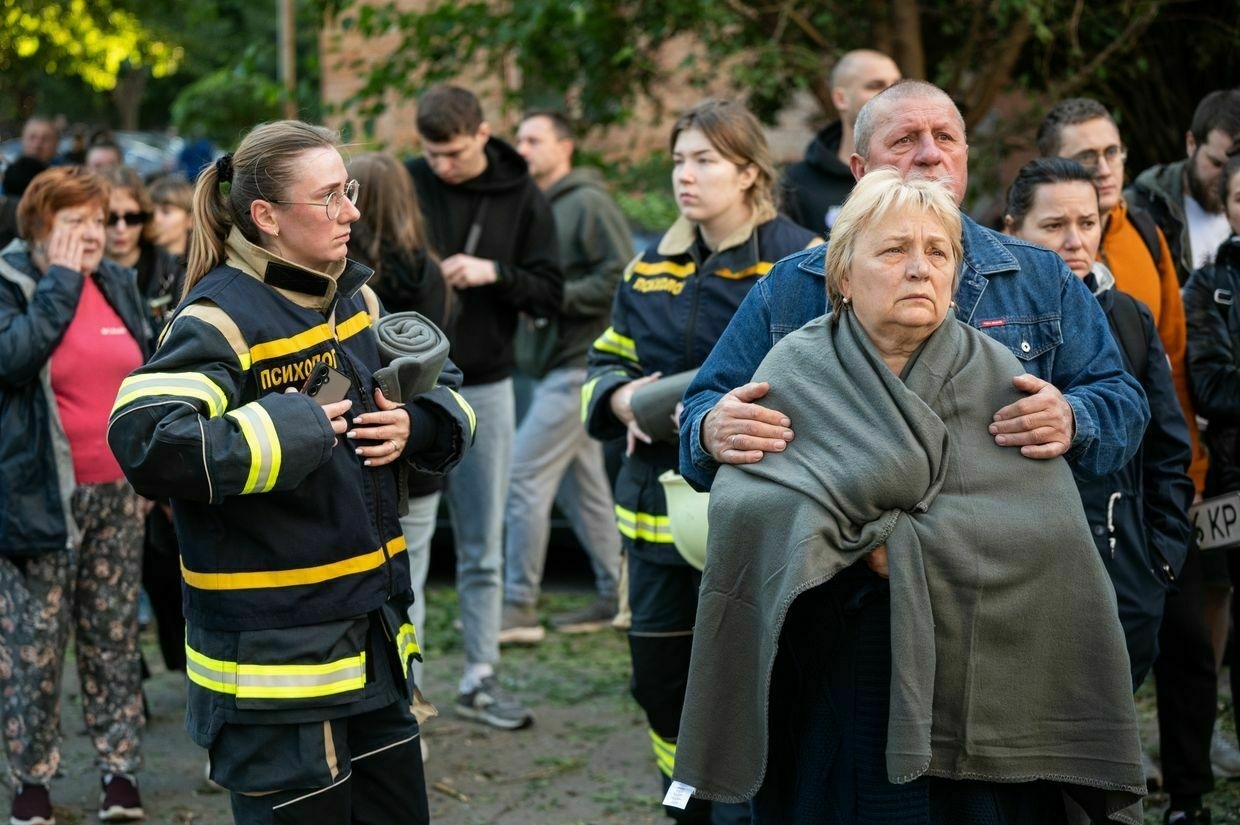-
Zelensky arrives at NATO summit in The Hague as Netherlands pledges new aid
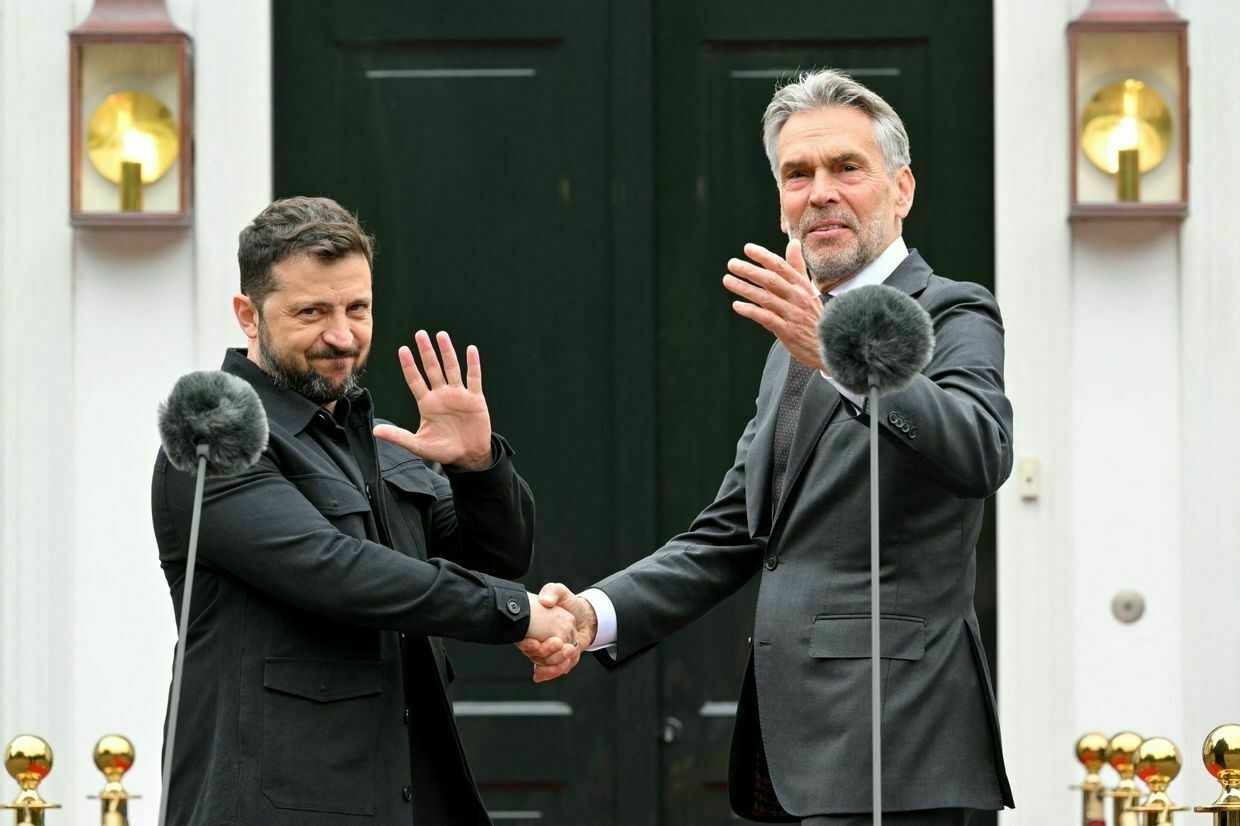
Editor’s note: The story is being updated.
President Volodymyr Zelensky met Dutch Prime Minister Dick Schoof on June 24 in The Hague as the two-day NATO summit takes off.
Welcoming Zelensky at the Catshuis official residence, Schoof presented a new military aid package for Ukraine, including front-line vehicles for evacuating the wounded and 80 million euros (over $90 million) for the drone initiative. The Netherlands will also help produce drones according to Ukraine’s specifications.
Zelensky arrived in the Netherlands on the evening of June 23, aiming to meet allied leaders – including U.S. President Donald Trump – to discuss the Western response to Russia’s war against Ukraine during the annual summit.
-
Zelensky plans to meet Trump at NATO summit in The Hague
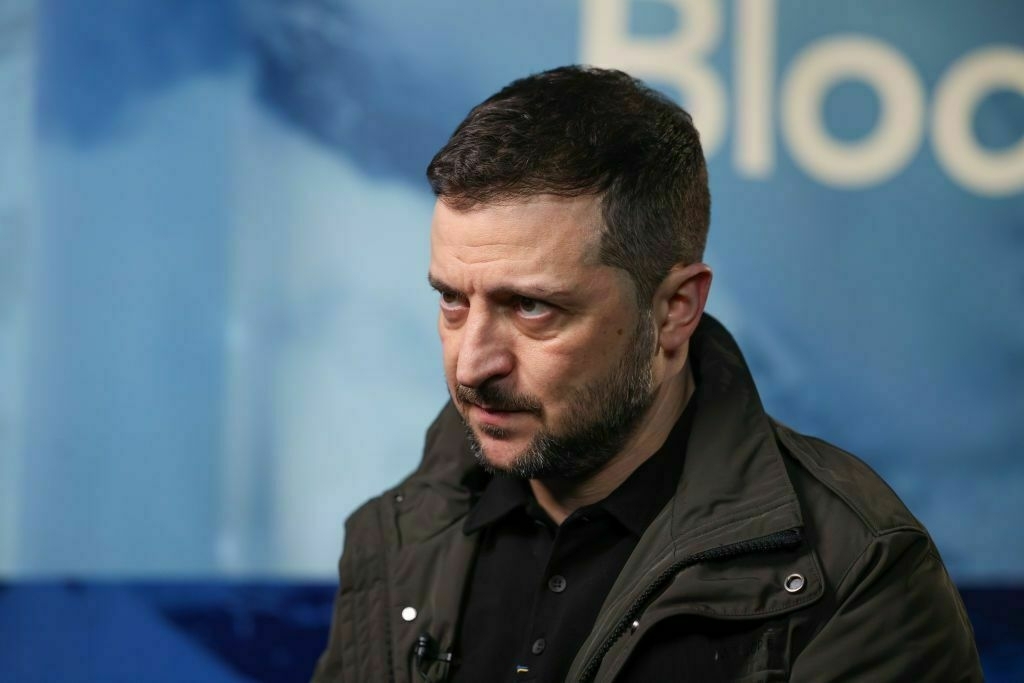
President Volodymyr Zelensky said he plans to meet U.S. President Donald Trump during the NATO summit in The Hague on June 24, as his team works to finalize the timing of the potential meeting.
“The teams are working on this. Yes, there are plans to meet,” Zelensky said in an interview with Sky News, published on June 24.
Asked whether the meeting would be a formal discussion or an informal encounter, Zelensky said it was a matter of scheduling: “They are talking about timing. It’s timing."
Zelensky’s participation in the summit was confirmed by the European Council on June 20, following reports that he was reconsidering the visit due to uncertainties surrounding Trump’s participation.
Upon arrival in The Hague on June 24, Andriy Yermak, head of Ukraine’s presidential office, said he held a “substantive” discussion with U.S. Secretary of State Marco Rubio about the upcoming Zelensky-Trump meeting. Yermak said the two discussed the structure, agenda, and key topics for the meeting.
Zelensky is also scheduled to meet European Commission President Ursula von der Leyen and NATO Secretary-General Mark Rutte during the summit.
In the interview, Zelensky also addressed concerns about Trump’s perceived closeness to Russian President Vladimir Putin.
“It is a complicated question because I truly do not know what relationship Trump has with Putin,” Zelensky said. “I think what I know, you know, and the media knows. There are various signals about that."
He added that he believes Trump understands Ukraine is a U.S. ally and that “the real existential enemy of America is Russia."
“They will never be friends. They may be short-term partners, but they will never be friends,” Zelensky said.
Zelensky expressed hope that Trump’s approach to Russia is tactical, intended to pressure Putin into peace negotiations. “I would like this approach to be only a way to force Putin to the negotiating table and to end the war. And let us hope so,” he said.
Zelensky was scheduled to meet Trump at the Group of Seven (G7) summit, held June 15-17. However, the U.S. president left the multilateral event early due to the renewed conflict between Israel and Iran.
Zelensky also left the summit early, citing Russia’s mass drone and missile attack on Kyiv.
‘Let’s not be naive’ — Rutte urges NATO to face Russia, China threats, pledges support for UkraineNATO Secretary General Mark Rutte said NATO’s role is to ensure Ukraine has the military means to stay in the fight until “serious” peace negotiations begin.The Kyiv IndependentAnna Fratsyvir
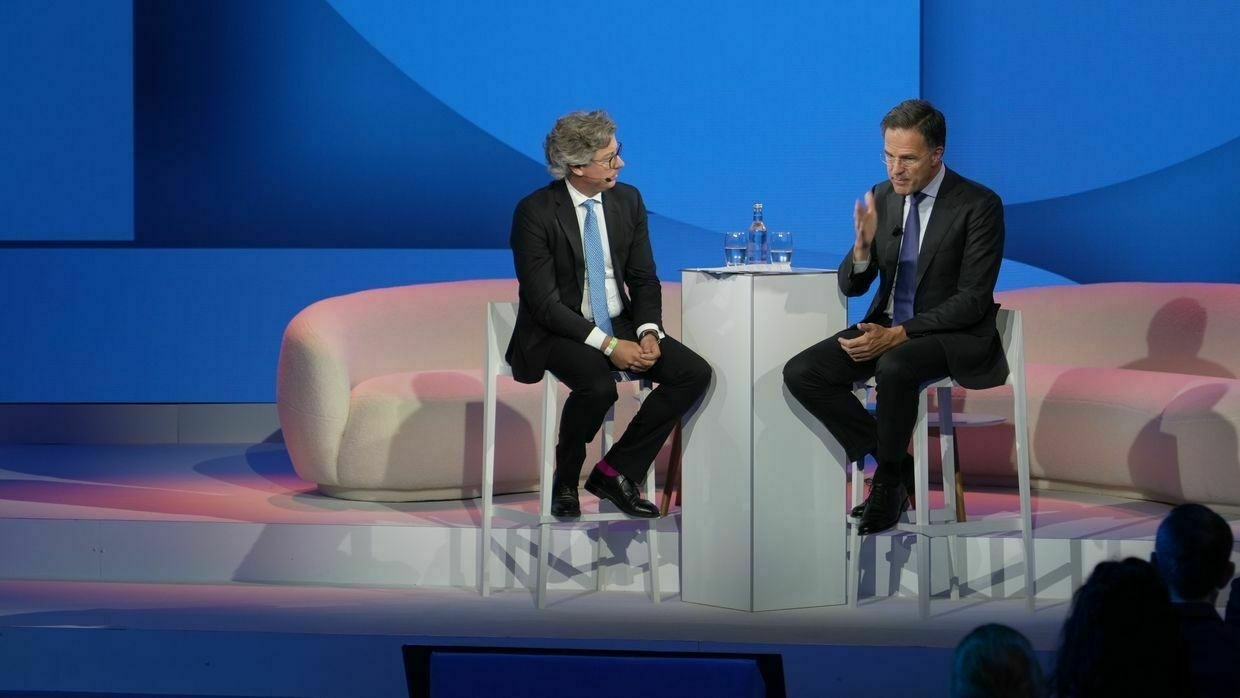
-
Europeans oppose following Trump if he pushes Ukraine to cede territory, lift Russia sanctions, poll finds
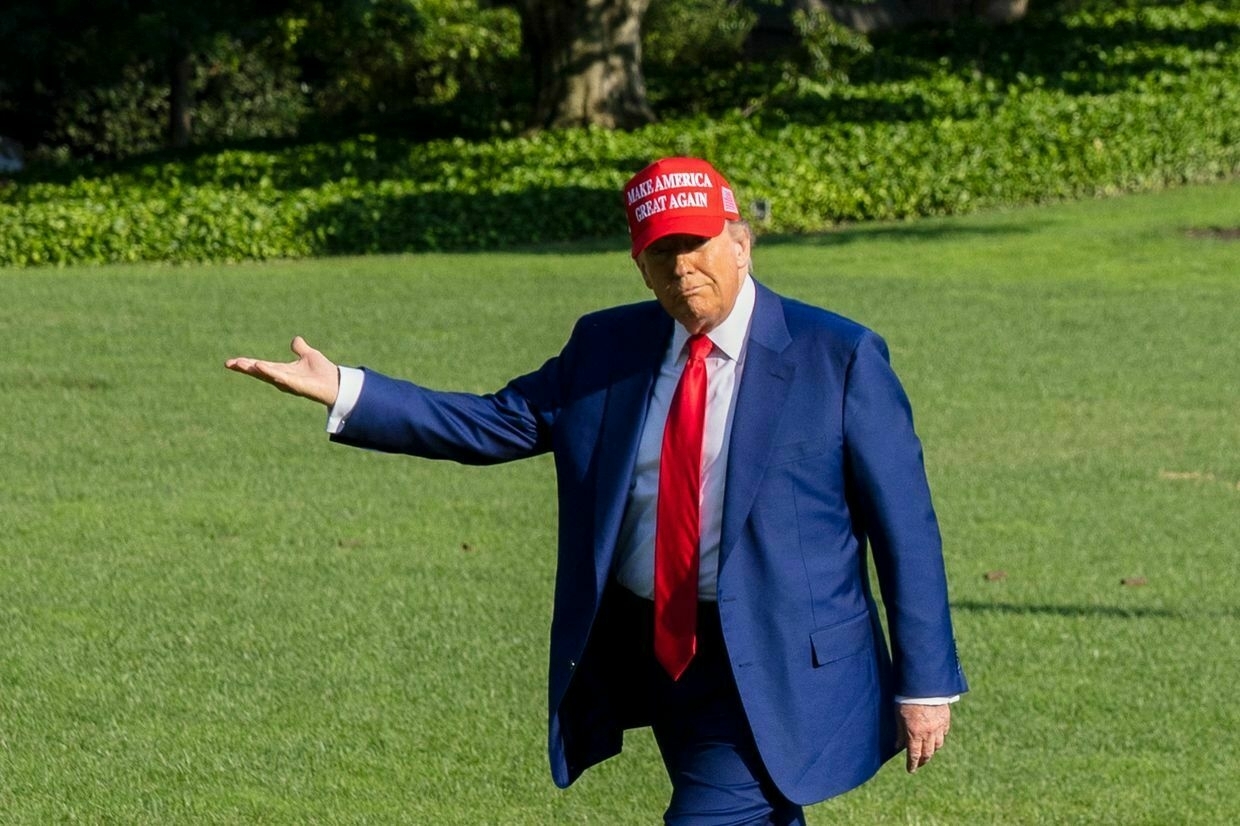
A majority of Europeans would oppose following the U.S.' lead if President Donald Trump pushed Ukraine to cede territories or lifted sanctions on Russia as part of a peace agreement, a new poll published on June 23 has found.
Despite the self-imposed deadline of 100 days to end the war in Ukraine, Trump is now 155 days into his presidency and Russian attacks have only escalated.
Trump has still yet to take any concrete steps to pressure Moscow into ending its war but has floated several concessions that Ukraine could be forced to make including ceding territory, while at the same time announcing no new military aid packages for Kyiv.
The survey, conducted by the European Council on Foreign Relations, found that even in countries with pro-Russian governments like Hungary, more people opposed the idea than supported it.
Respondents in 12 countries (Denmark, Estonia, France, Germany, Hungary, Italy, Poland, Portugal, Romania, Spain, Switzerland and the U.K.) were asked about three scenarios — the U.S. pushing Ukraine to cede territory, lifting sanctions on Russia, and withdrawing all military support.
Majorities in all countries opposed their own governments following the U.S. lead except for Hungary in the case of withdrawing all military support.
Opposition was highest in Denmark, the U.K., Poland, Spain and Portugal, and lowest in Hungary, Romania and Italy.
“A benevolent interpretation is that Europeans support an autonomous European policy to support Ukraine and they don’t want to blindly follow Trump’s lead,” the report’s authors said.
“But another reading of that data is that Europeans want Ukrainians to continue fighting on their behalf."
The wide-ranging survey also asked about attitudes to increasing defense spending and compulsory military service.
Majorities supported increased defense spending in Poland (70%), Denmark (70%), and the U.K. (57%), with large minorities in Germany (47%), Spain (46%), and France (45%).
When asked about compulsory military service, France (62%), Germany (53%), and Poland (51%) were the strongest supporters but crucially, not in the age bracket most likely to be called up — 18 to 29-year-olds.
Europeans are also becoming increasingly despondent about the U.S. under the leadership of Trump, with large majorities in the U.K. (74%) and Germany (67%) believing the U.S. political system is “broken."
The ECFR poll surveyed 16,440 adults last month.
‘Let’s not be naive’ — Rutte urges NATO to face Russia, China threats, pledges support for UkraineNATO Secretary General Mark Rutte said NATO’s role is to ensure Ukraine has the military means to stay in the fight until “serious” peace negotiations begin.The Kyiv IndependentAnna Fratsyvir
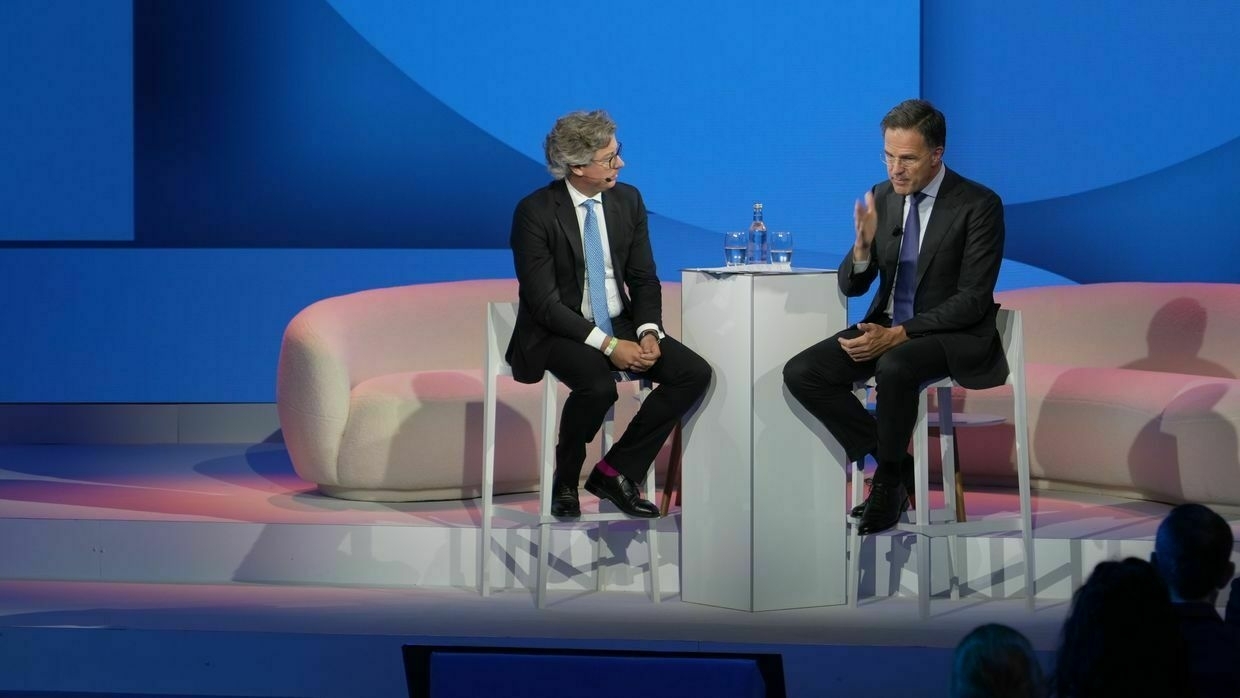
-
'Dead and wounded everywhere' — Russia strikes Dnipro with ballistic missiles, hits civilian train
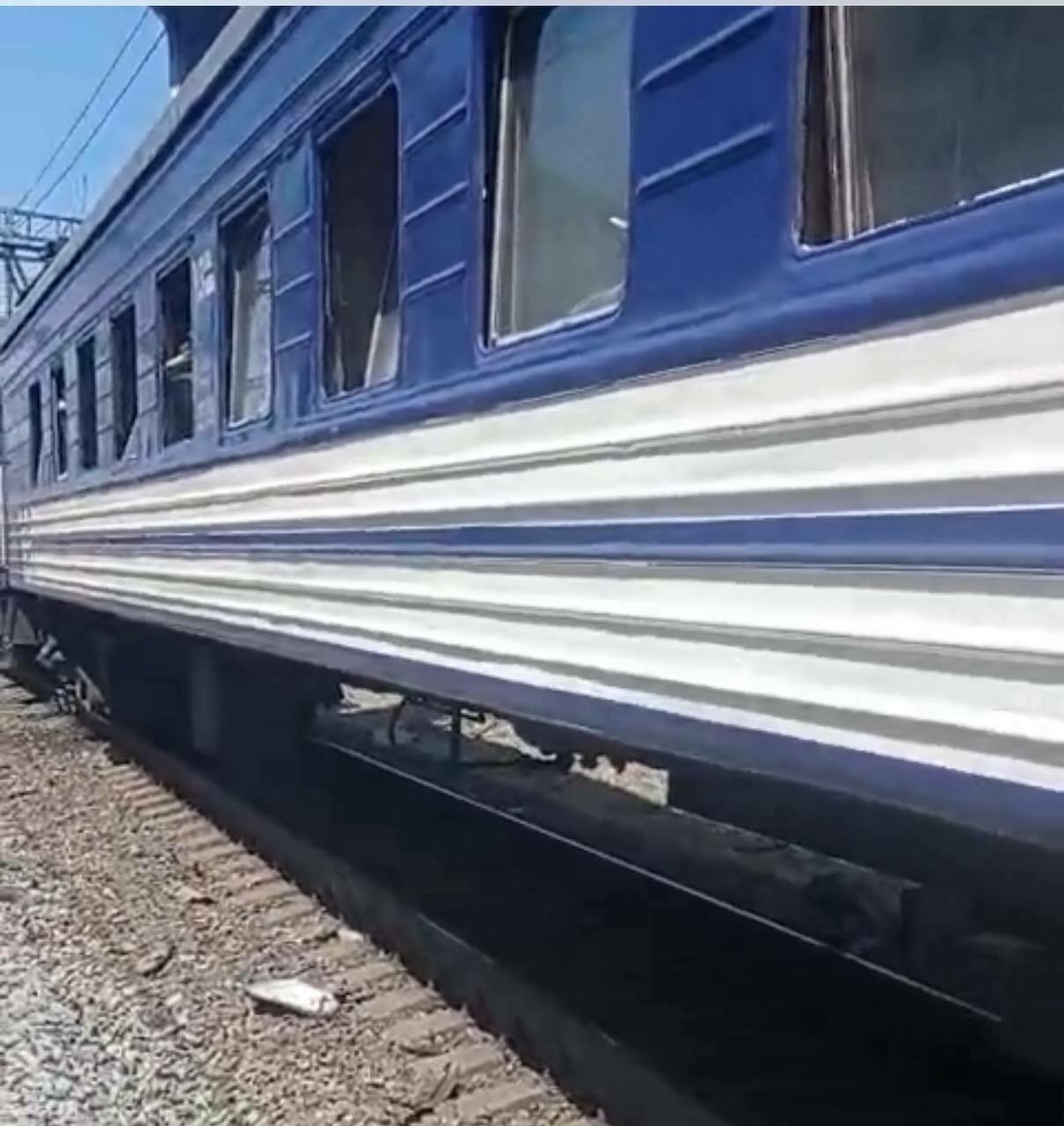
Editor’s note: This is a developing story and is being updated.
Russia launched a deadly missile attack on the Ukrainian city of Dnipro on June 24, striking civilian infrastructure and a passenger train, local officials reported.
Dnipropetrovsk Oblast Governor Serhii Lysak said the morning strike ignited a large fire and damaged a dormitory, a gymnasium, and an administrative building in the city.
The Russian military also struck the nearby town of Samarske, Lysak said. Casualties were reported in both locations.
“Unfortunately, there are dead and wounded everywhere,” he said.
According to Lysak, at least one person was killed and more than 20 people injured in Dnipro. Among the wounded are two children, both hospitalized in moderate condition.
In Samarske, two people were killed and three others were injured, Lysak added.
Ukraine’s national railway company, Ukrzaliznytsia, said that a train traveling from Odesa to Zaporizhzhia was damaged in the attack.
“Ukrzaliznytsia is preparing a replacement train in Dnipro to evacuate passengers to Zaporizhzhia,” the company said in a statement.
In an update, Ukrzaliznytsia said no passengers or railway workers were killed in the attack, though several people sustained injuries and are receiving medical care.
The attack came as NATO leaders convened for a high-level summit in The Hague. NATO Secretary General Mark Rutte warned on June 23 that Russia remains the alliance’s most immediate and long-term threat.
Explained: How Ukraine negotiates prisoner of war swaps with RussiaEven after Ukraine cut diplomatic ties with Russia in 2022, prisoner exchanges have continued as one of the few remaining channels of communication between the two countries. Negotiated behind closed doors and carried out irregularly, POW swaps — and the decisions surrounding them — have long been shrouded in secrecy. Controversies haveThe Kyiv IndependentDaria Shulzhenko
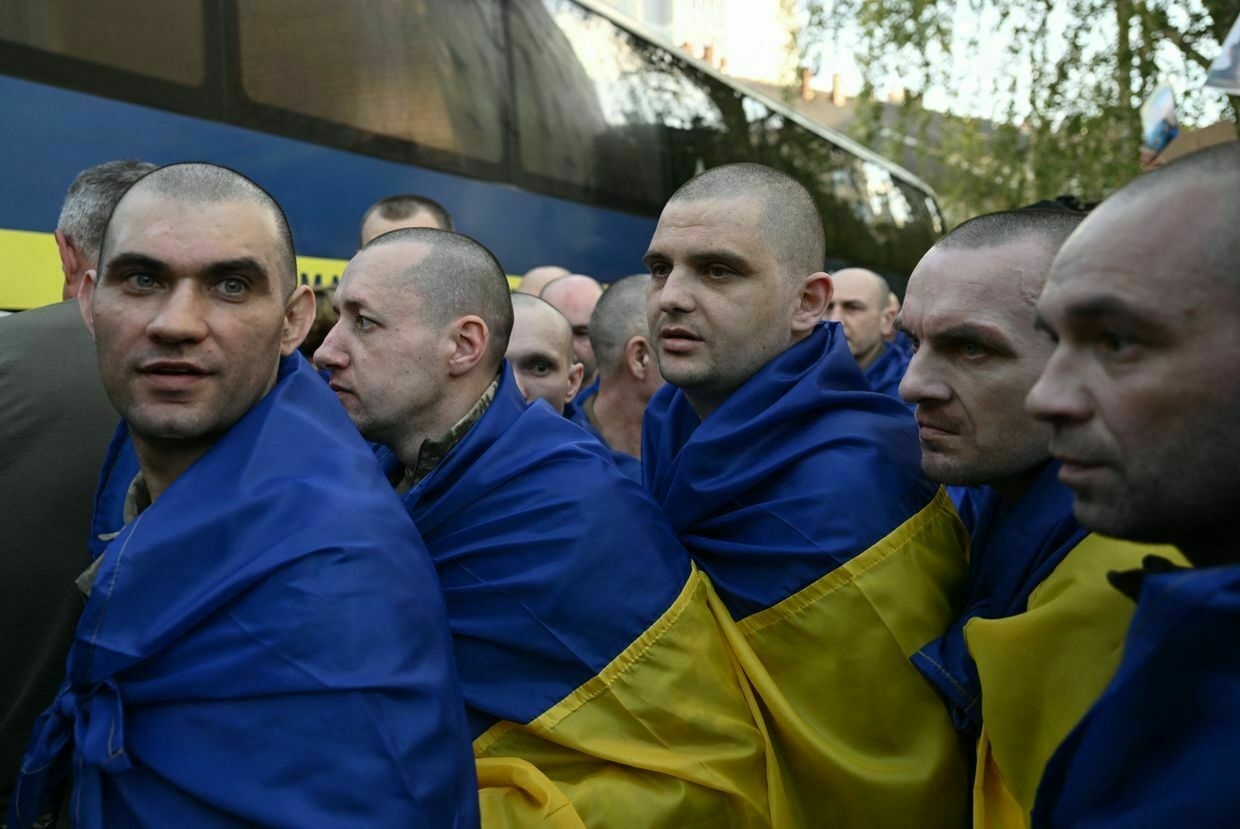
-
'Let's not be naive' — Rutte urges NATO to face Russia, China threats, pledges support for Ukraine
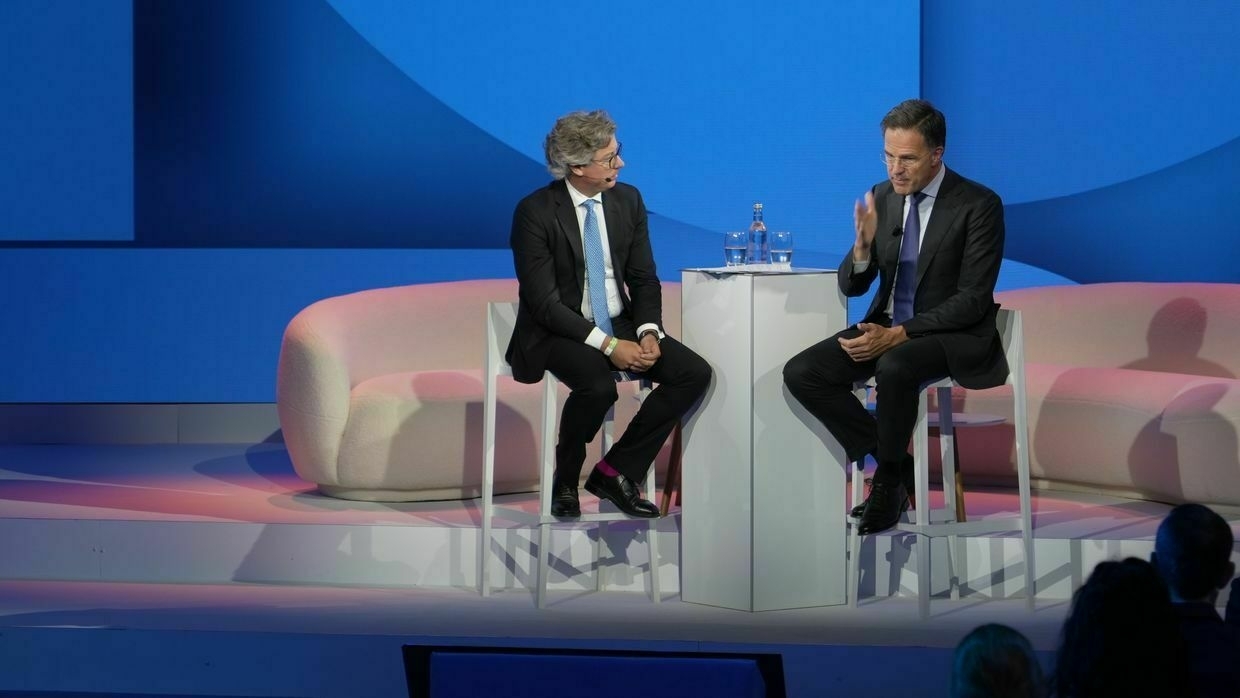
Speaking on the sidelines of the NATO summit in The Hague on June 24, NATO Secretary General Mark Rutte called on alliance members to be realistic about the threats posed by Russia and China, and urging them to stay the course in supporting Ukraine.
“Let’s not be naive,” Rutte said. “You see what China, North Korea and Iran are doing in supporting the war effort of Russia … So this is all interconnected."
Rutte emphasized that while NATO faces multiple global challenges, from the war in Ukraine to tensions in the Middle East and Russian influence in Africa, the alliance must be able to focus on more than one crisis at a time.
“If you can only deal with one issue at a time, you should not be in politics or defense,” he said.
Rutte said NATO’s role is to ensure Ukraine has the military means to stay in the fight until “serious” peace negotiations begin.
“We have to make sure that Ukraine is in the strongest possible position when real talks start,” he said. “I’m not talking about these talks led by some Russian historian (Vladimir Medinsky) who wants to go back 1,000 years… That’s not serious business.”
The talks he referenced, led by Russian presidential aide Vladimir Medinsky and held in Istanbul in May-June, have yielded prisoner exchange agreements but no progress toward a ceasefire or settlement. Ukraine has offered a comprehensive roadmap, but Rutte said Russia had not come to the table with serious intent.
’100 days of Russian manipulations’ — Ukraine blasts Moscow over disregarding US ceasefire effortA hundred days since the U.S. and Ukraine agreed on a ceasefire, “Russia continues to choose war,” Foreign Minister Andrii Sybiha said on June 19, urging international pressure to push Moscow toward peace.The Kyiv IndependentMartin Fornusek
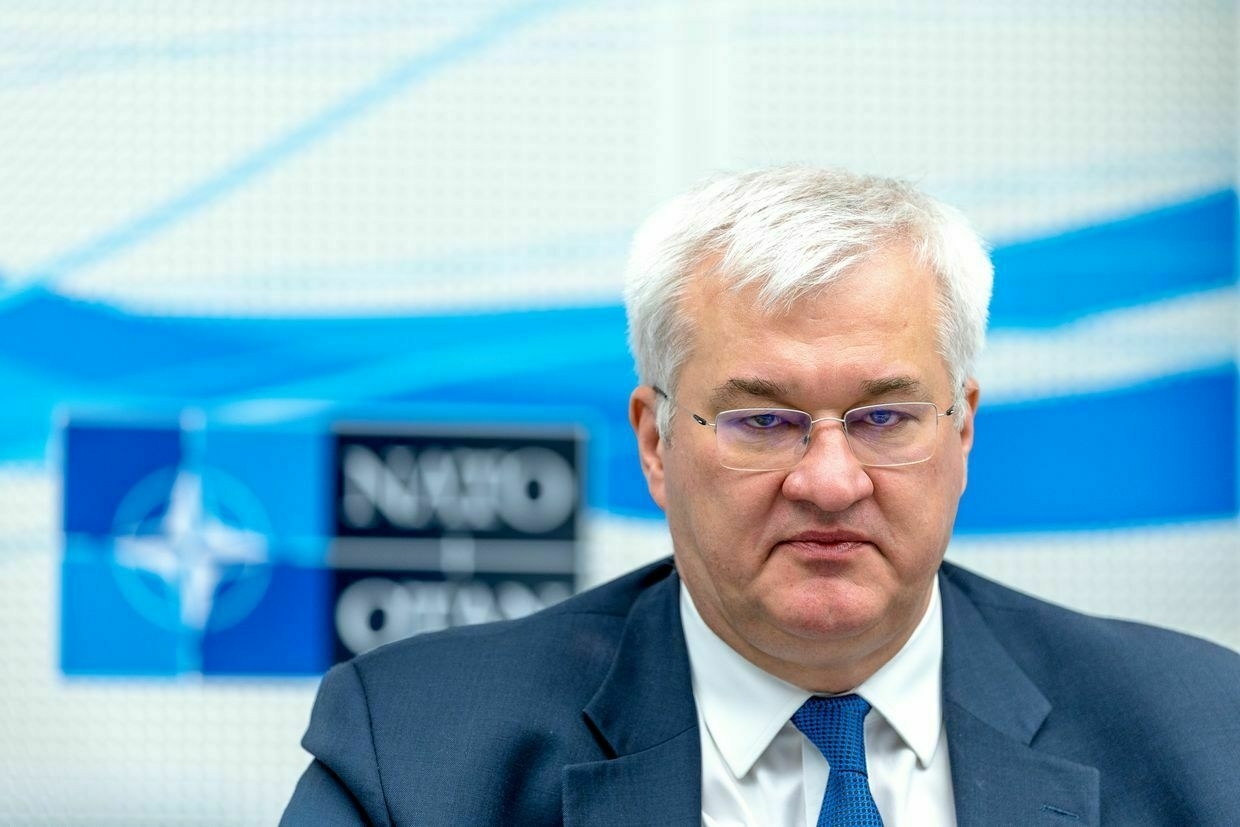
Instead, Russia continues to reject U.S. proposed comprehensive ceasefire, and insists on its longstanding maximalist demands.
“When the time comes for serious talks, we must ensure any long-term ceasefire or peace deal is durable — so that (Russian President) Vladimir Putin will never again try to seize even one square kilometer of Ukrainian territory,” Rutte said.
Rutte also stressed that Ukraine is evolving from a security consumer into a security producer. He noted that the country’s “largely untapped” defense industrial base, with a potential value of up to $35 billion, is increasingly attracting European investment.
“Ukraine has one of the largest defense industries in Europe,” Rutte said, adding that many countries, including Norway, Denmark, and Lithuania, are now investing in it. “That helps Ukraine, and it helps us.”
Responding to concerns over Europe’s reliance on the United States, Rutte said NATO must stop “worrying so much” about U.S. commitment and instead ramp up its own military capabilities.
“There is total commitment by the U.S. President and U.S. senior leadership,” Rutte said, dismissing doubts about Washington’s future role in NATO. “However, it comes with an expectation that we will finally deal with this huge bubbling issue, which is that we are not spending enough as Europeans and Canadians."
Rutte strongly backed the alliance’s new 5% GDP defense investment benchmark, saying increased spending must translate into ammunition stockpiles, troop recruitment, and industrial output. “The Russians are producing in three months what NATO produces in a year,” he said.
Earlier, U.S. President Donald Trump accused NATO members of underfunding their militaries, pushing for raising defense spending benchmark to 5% of GDP.
In 2024, only 23 alliance members met the 2% target, according to NATO estimates. Poland was ahead of all members with 4.12% of GDP allocated to defense, followed by Estonia (3.43%) and the U.S. (3.38%).
‘If we don’t help Ukraine further, we should start learning Russian,’ EU diplomacy chief saysTop EU diplomat Kaja Kallas cited a sharp increase in Russia’s military spending, noting that Moscow is now allocating more money to defense than the EU combined, and more than its own health care, education, and social policies put together.The Kyiv IndependentAnna Fratsyvir
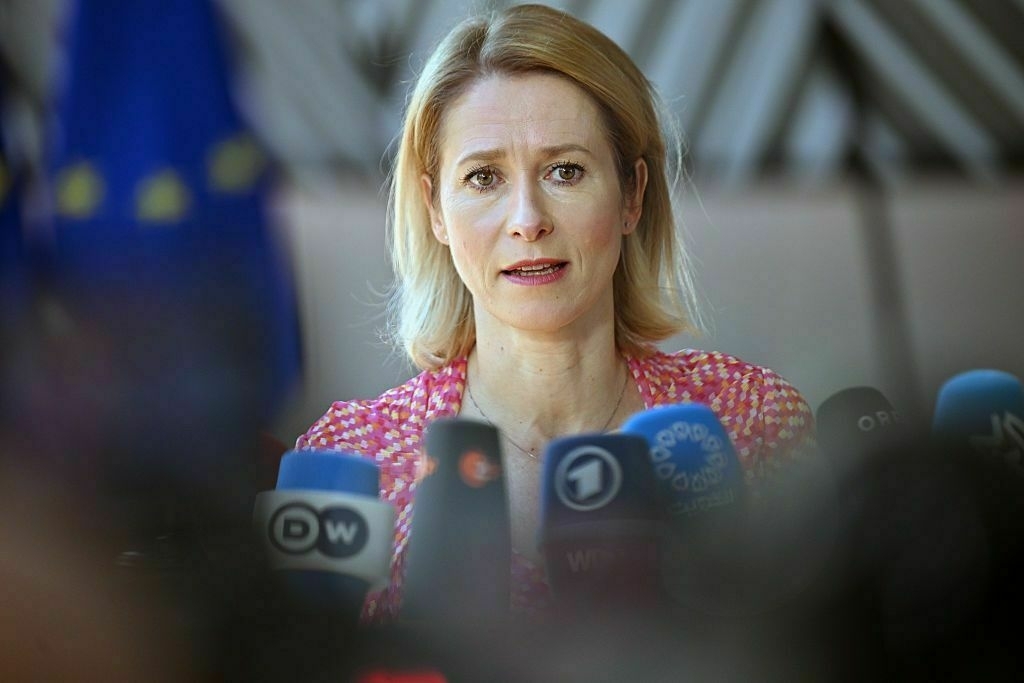
-
Israel accuses Iran of violating ceasefire hours after Trump announcement
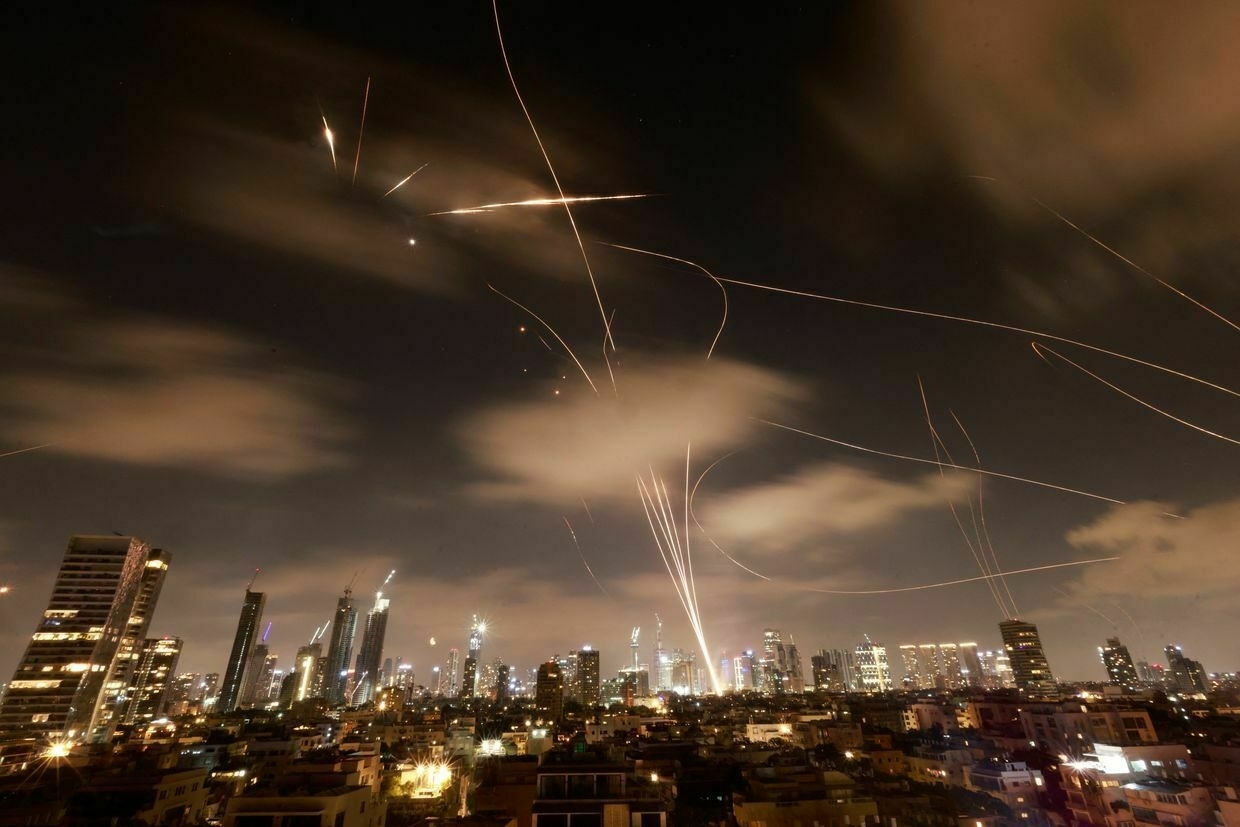
Iran launched missiles toward Israel on June 24, just hours after U.S. President Donald Trump announced a ceasefire between the two countries had come into effect, the Israeli military said. Iran denied the accusation.
“A short while ago, sirens sounded in northern Israel following the identification of missiles launched from Iran toward the State of Israel,” the Israel Defense Forces (IDF) said in a statement.
“At this time, the IAF (Israeli Air Force) is operating to intercept and strike where necessary to eliminate the threat,” the statement read.
Israeli Defense Minister Israel Katz instructed the army to respond forcefully to Iran’s ceasefire violation, Reuters reported. Katz said that Israel will continue to strike Iran after the “utter violation” of the ceasefire.
Shortly after Israel’s statement, Iranian state media reported that Tehran denied firing missiles at Israel after the seasefire began.
The reports come after days of escalating hostilities in the Middle East. Early on June 24, Trump declared in a Truth Social post that a ceasefire had begun, writing, “The ceasefire is now in effect. Please do not violate it!"
Israeli Prime Minister Benjamin Netanyahu said on June 24 Israel had agreed to Trump’s ceasefire proposal, claiming that Israel had “achieved its goal of removing the Iranian nuclear and ballistic missile threat,” according to Reuters.
Previously, the U.S. launched airstrikes on Iran’s nuclear facilities in Fordow, Natanz, and Esfahan on June 21. In response, Iran fired missiles at U.S. military bases in the region, including at least 10 targeting Al Udeid Air Base in Qatar and one aimed at a base in Iraq.
The Pentagon confirmed that Iran launched several short- and medium-range missiles at Al Udeid but reported no U.S. casualties. Trump dismissed the attacks as “limited and largely ineffective."
Iran is a key arms supplier to Russia, providing Shahed drones used in attacks on Ukrainian cities and pledging to send ballistic missiles. Israel, while home to a significant Russian-speaking population, has not joined Western sanctions against Moscow.
Ceasefire between Iran and Israel now in effect, Trump says“The ceasefire is now in effect. Please do not violate it!” U.S. President Donald Trump said in a post on Truth Social on June 24.The Kyiv IndependentAnna Fratsyvir
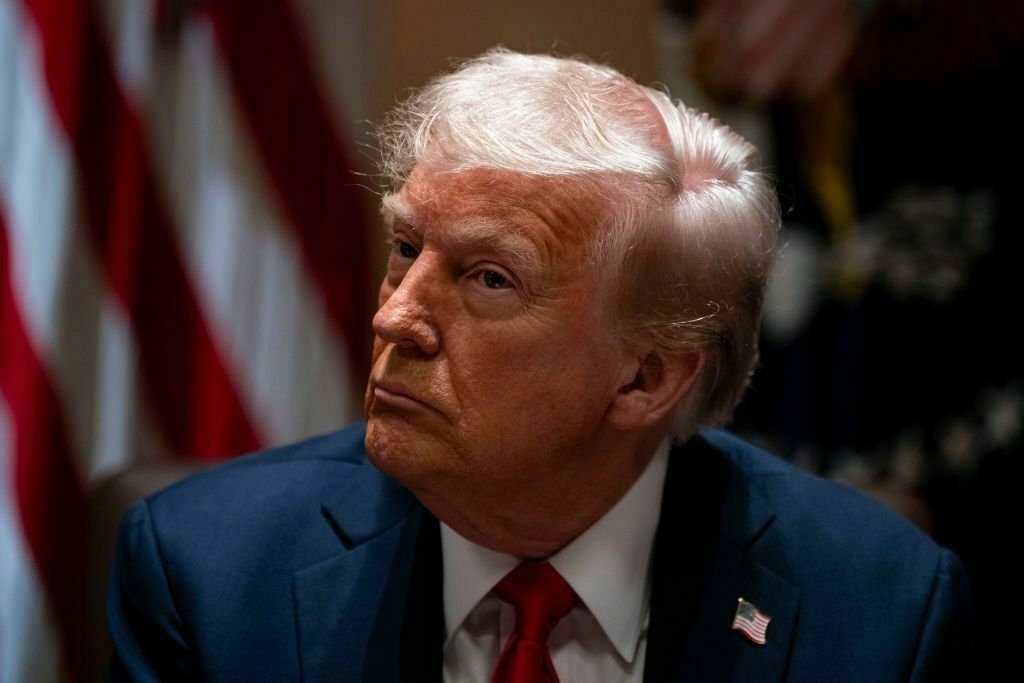
-
Russia remains 'the most significant, direct threat' to NATO, Rutte says ahead of summit
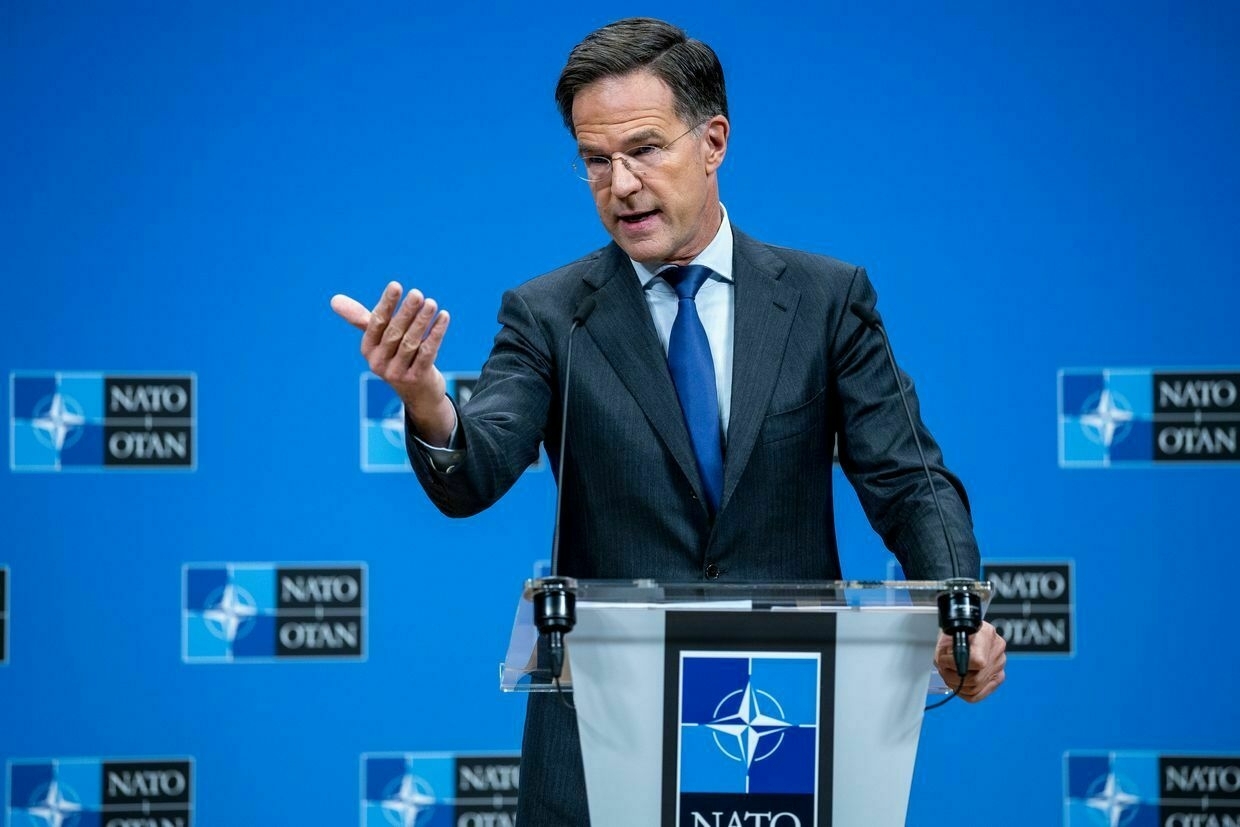
NATO Secretary General Mark Rutte said during a press briefing on June 23 that Russia remains the main threat to the alliance, citing Moscow’s cooperation with China, North Korea, Iran, and Belarus.
“Moscow continues to wage war against Ukraine, with support of North Korea, Iran, and China, as well as Belarus,” Rutte said.
The Secretary General told reporters that the alliance leaders are set to adopt a historic defense investment plan at the summit in The Hague on June 24-25, including a new benchmark of 5% of GDP for defense spending and a strengthened commitment to Ukraine.
“All leaders will take bold decisions to strengthen our collective defense, making NATO a stronger, fairer, and more lethal alliance,” Rutte said at a press conference before the summit. “This is a leap that is ambitious, historic, and fundamental to securing our future.”
Rutte said the plan includes major increases in air defense systems, tanks, armored vehicles, and artillery, a response to the evolving threat landscape, particularly Russia’s war against Ukraine.
“We see Russia’s deadly terror from the skies over Ukraine every day. We must be able to defend ourselves from such attacks,” Rutte added.
The Secretary General warned that NATO must act urgently to prepare for future threats, citing assessments that Russia could rebuild sufficient military capacity to challenge NATO within five years. “Our security environment has changed, and not for the better. The threats we face today demand that we do far more,” he said.
Rutte emphasized that the new defense investment plan will be reviewed in 2029, with annual reporting to ensure credibility.
He stressed that NATO remains committed to supporting Kyiv and reaffirmed the alliance’s long-standing position that “Ukraine’s path to NATO membership is irreversible.” According to Rutte, the allies have pledged over 35 billion euros ($40,6 billions) in military aid to Ukraine for the first half of 2025, up from 20 billion announced earlier this year.
President Volodymyr Zelensky is attending the summit and will hold multiple meetings with NATO leaders. However, NATO’s Ukraine Council will not convene, a decision seen as part of efforts to keep the summit’s focus narrow, a move aimed at appeasing U.S. President Donald Trump, according to Politico.
The summit, shortened to 24 hours, has only one major session on defense spending. European officials cited by Politico said the format was designed to deliver a clear win to Trump, who is expected to tout the 5% spending pledge as a personal success. The U.S. is reportedly exempting itself from the new benchmark.
While recent summits have centered on Russia’s invasion of Ukraine, this year’s joint communique may omit references to the war.
During the briefing, Rutte said that the final communique, agreed by NATO ambassadors, has “important language” about Ukraine, including defense spending up until 2035.
“This is a clear commitment by allies,” Rutte said.
Pro-Russian ‘peace protestors’ set to descend on NATO summitDutch protesters who regularly call for an end to military aid to Ukraine will descend on The Hague next week to protest the upcoming NATO summit, which is set to take place on June 24-25. The group will protest against NATO alongside several other organizations and has urged supporters onThe Kyiv IndependentLinda Hourani
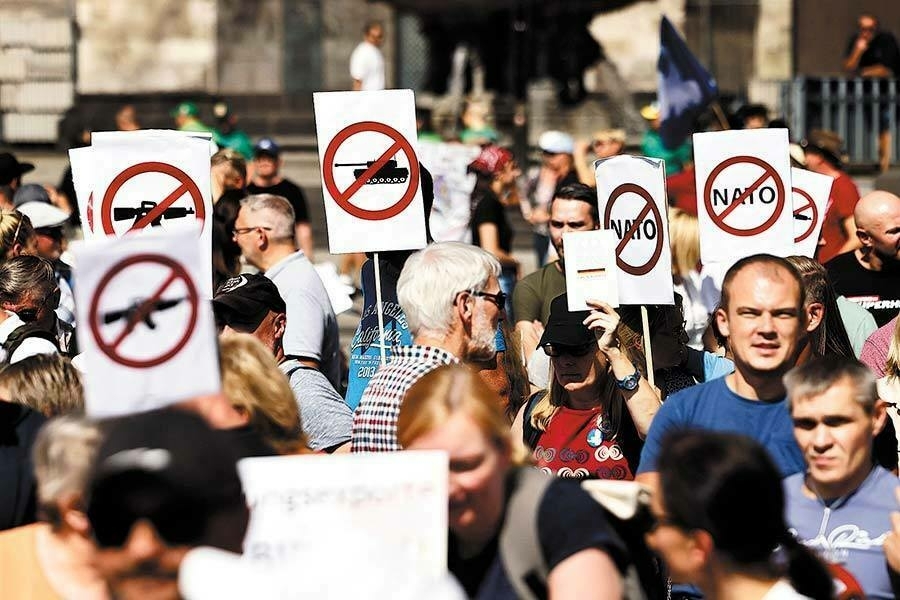
-
New commander appointed to lead 152nd Brigade
By order of the Commander of the Ground Forces of the Armed Forces of Ukraine, Colonel Yuri Maksimiv has been appointed to a new position and will be leaving the…
-
Ceasefire between Iran and Israel now in effect, Trump says
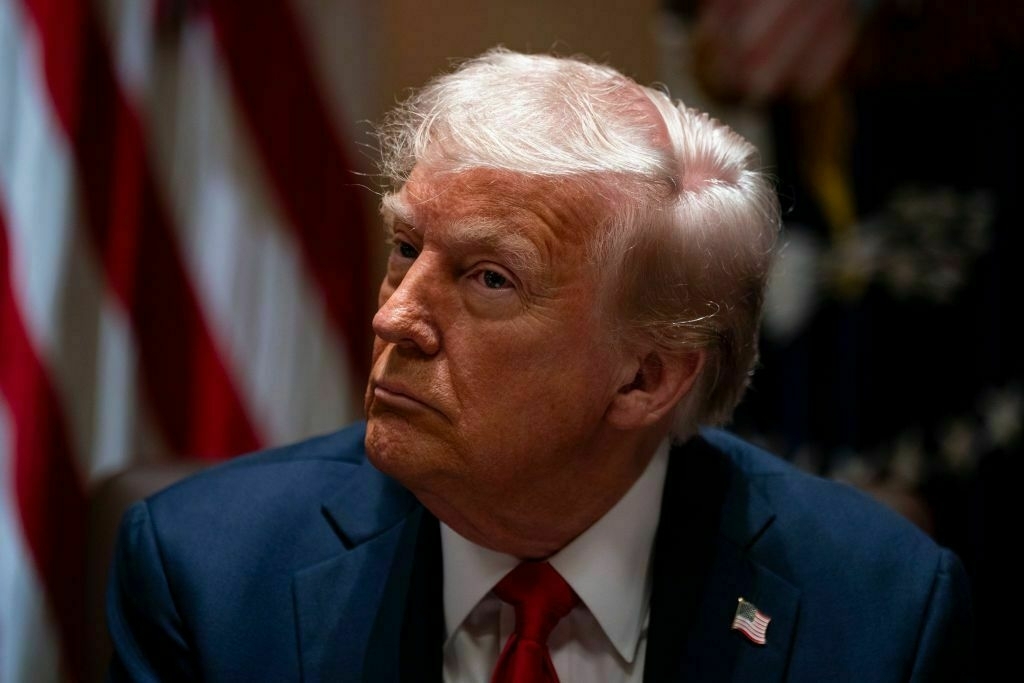
U.S. President Donald Trump announced on June 24 that a ceasefire between Iran and Israel had come into effect, following the U.S. strikes on Iranian nuclear facilities and retaliatory attack on U.S. military base in Qatar.
“The ceasefire is now in effect. Please do not violate it!” Trump said in a post on Truth Social on June 24.
The announcement follows days of intensifying conflict after the U.S. conducted airstrikes on Iranian nuclear facilities on June 21, targeting sites in Fordow, Natanz, and Esfahan.
In response, Iran launched multiple missiles at U.S. military bases in the region, including at least 10 toward the Al Udeid Air Base in Qatar and at least one toward a base in Iraq, Axios reported, citing an Israeli source.
The Pentagon confirmed that Iran fired several short- and medium-range missiles at Al Udeid, but said no American personnel were harmed. Trump downplayed the attack, calling it “limited and largely ineffective."
Israeli Prime Minister Benjamin Netanyahu said on June 24 that Israel has agreed to a U.S.-brokered ceasefire with Iran, thanking Trump for his support in defending Israel and “removing the Iranian nuclear threat,” according to Reuters.
“Israel has achieved its goal of removing the Iranian nuclear and ballistic missile threat,” Netanyahu said in a statement. “Israel thanks President Trump for his support and participation in removing the Iranian nuclear threat."
Iran is a key arms supplier to Russia, providing Shahed drones used in attacks on Ukrainian cities and pledging to send ballistic missiles. Israel, while home to a significant Russian-speaking population, has not joined Western sanctions against Moscow.
Tensions between Iran and Israel had already been rising after Iran launched missile strikes on Tel Aviv and other Israeli cities on June 13, killing multiple civilians, including five Ukrainian nationals. The attack came in retaliation for Israeli military action.
Trump, who has long styled himself as a dealmaker and peacemaker, has come under criticism for his failure to deliver on promises to reach a ceasefire between Russia and Ukraine. During his electoral campaign, he pledged to end the war between Russia and Ukraine within 24 hours of taking office. More than 100 days after Ukraine accepted a U.S.-backed proposal for a ceasefire, no progress has been made.
“It has been exactly 100 days since Ukraine unconditionally accepted the U.S. peace proposal to completely cease fire, put an end to the killing, and move forward with a genuine peace process,” Ukrainian Foreign Minister Andrii Sybiha said on June 19. “Russia continues to choose war."
Ukraine backed the proposal during talks in Jeddah on March 11, agreeing to a 30-day unconditional ceasefire. Russia has rejected the offer, continuing its assault on Ukrainian cities and pushing for maximalist demands.
“It is time to act now and force Russia to peace,” Sybiha said. “Peace through strength, increased sanctions, and enhanced capabilities for Ukraine."
After 40 months of waging full-scale war on Ukraine, Putin condemns ‘unprovoked aggression against Iran’Since Russia launched its full-scale invasion of Ukraine, Moscow has killed tens of thousands of Ukrainian civilians, and the true extent of the death toll is simply not known.The Kyiv IndependentThe Kyiv Independent news desk
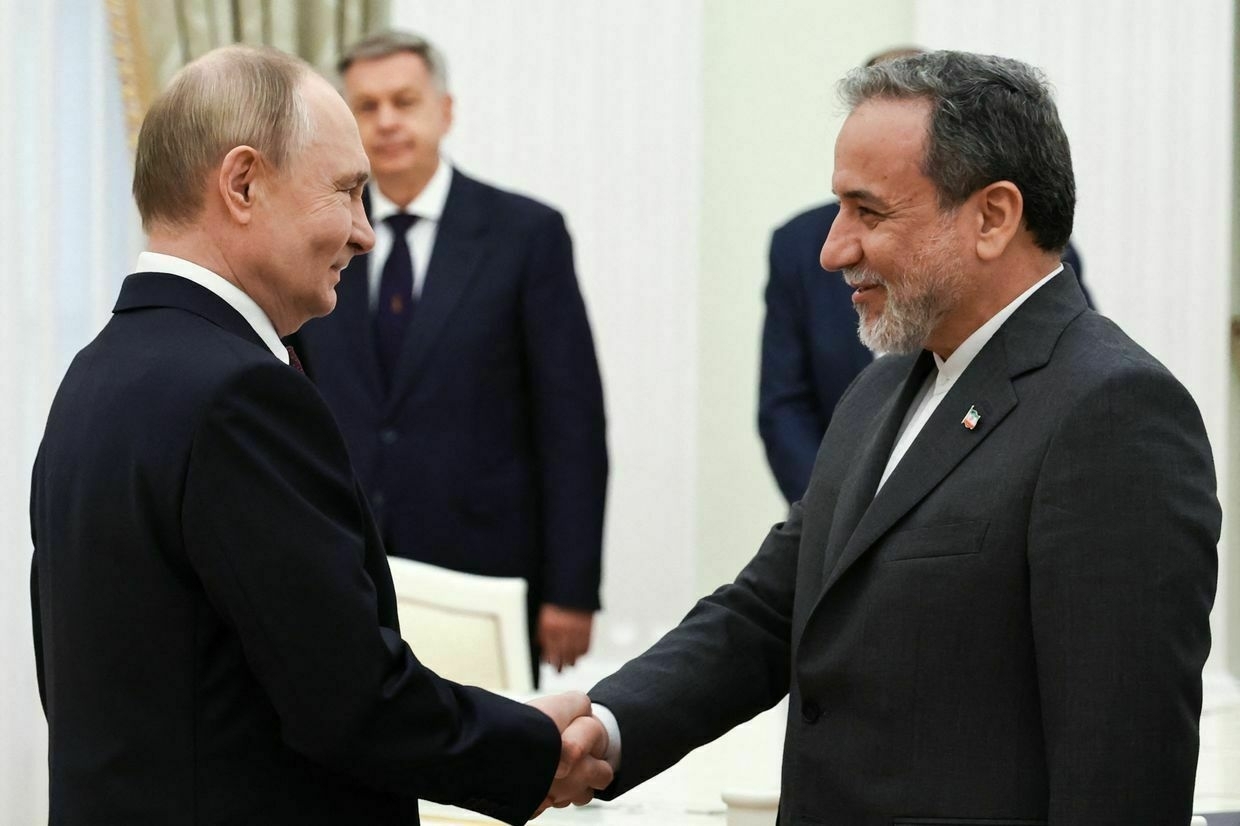
-
General Staff: Russia has lost 1,013,700 troops in Ukraine since Feb. 24, 2022
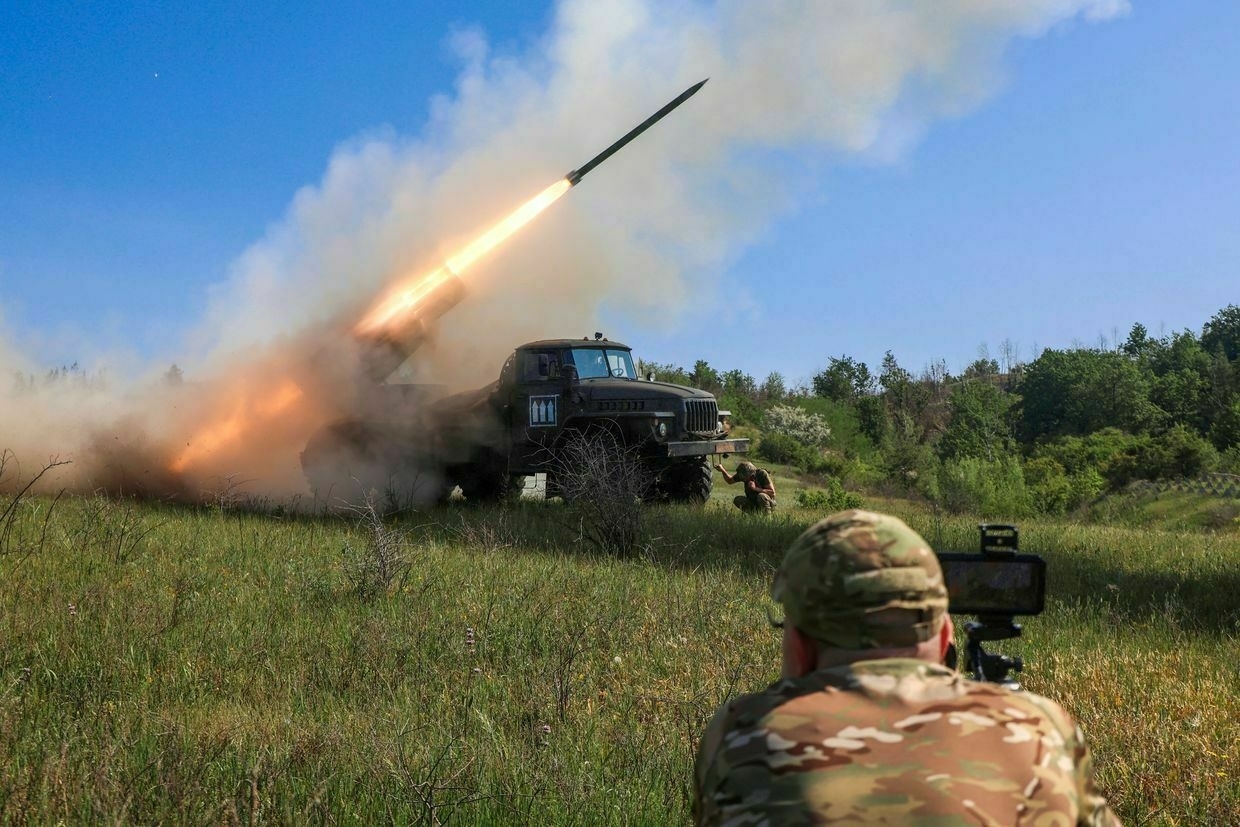
Russia has lost 1,013,700 troops in Ukraine since the beginning of its full-scale invasion on Feb. 24, 2022, the General Staff of Ukraine’s Armed Forces reported on June 24.
The number includes 1,200 casualties that Russian forces suffered just over the past day.
According to the report, Russia has also lost 10,966 tanks, 22,879 armored fighting vehicles, 52,961 vehicles and fuel tanks, 29,511 artillery systems, 1,424 multiple launch rocket systems, 1,188 air defense systems, 416 airplanes, 337 helicopters, 41,915 drones, 3,388 cruise missiles, 28 ships and boats, and one submarine.
Zelensky, Starmer hail ‘massive step forward’ in military cooperationDuring a joint visit to a U.K. military training site for Ukrainian personnel, Prime Minister Keir Starmer said he and Zelensky held “an excellent bilateral meeting” and had agreed to an “industrial military co-production agreement.”The Kyiv IndependentOlena Goncharova
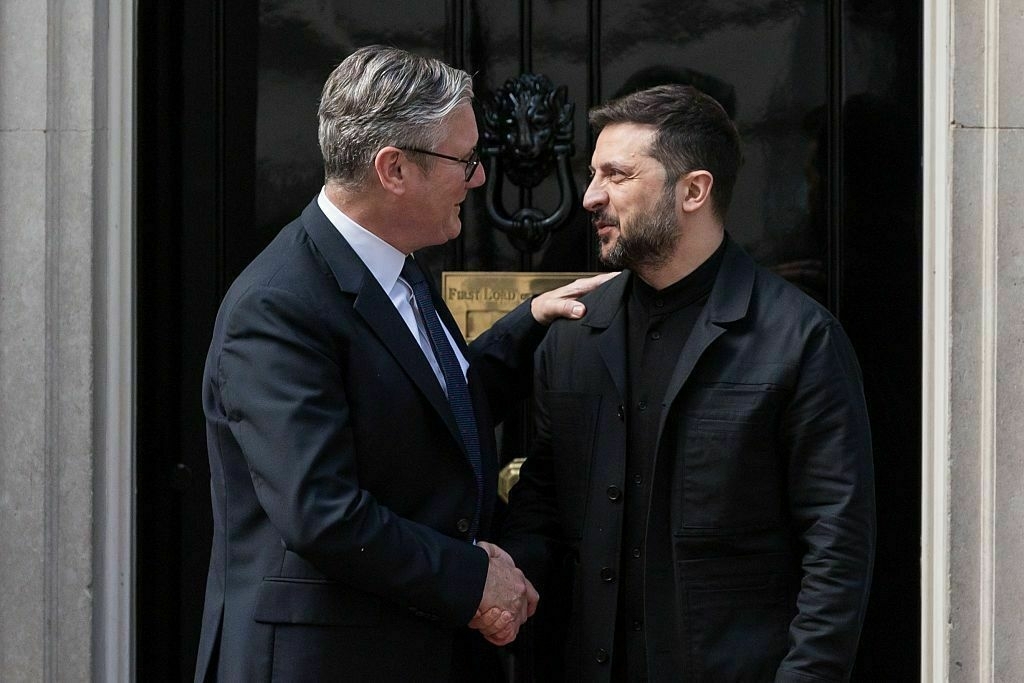
-
Russian strikes kill 4, injure 5 in Kherson Oblast
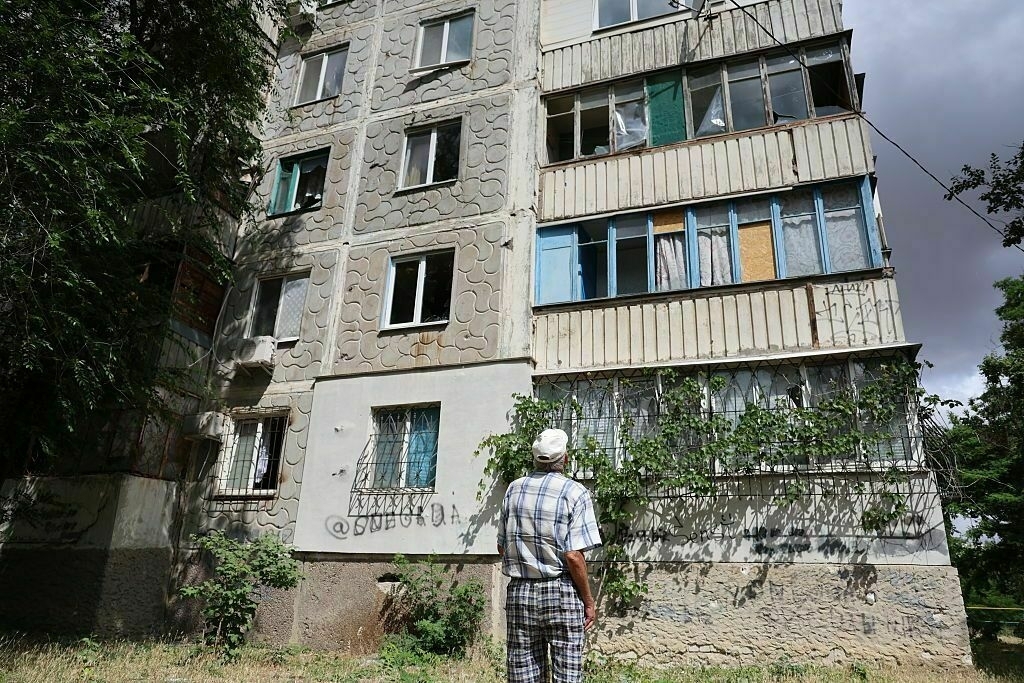
Russian attacks on Kherson Oblast killed four people and injured five others between June 23 and 24, local officials reported.
Russian forces launched drone and artillery strikes on dozens of settlements across the region, Governor Oleksandr Prokudin said on Telegram.
Twenty-nine settlements were affected, including the regional capital, Kherson, which shares the same name as the oblast.
The strikes damaged critical infrastructure and residential areas, including four private houses. A shop and several private vehicles were also reportedly damaged.
Kherson Oblast, located in southern Ukraine just north of Russian-occupied Crimea, has been repeatedly targeted by Russian forces since the start of the full-scale invasion.
Explained: How Ukraine and Russia swap prisoners of warEven after Ukraine cut diplomatic ties with Russia in 2022, prisoner exchanges have continued as one of the few remaining channels of communication between the two countries. Negotiated behind closed doors and carried out irregularly, POW swaps — and the decisions surrounding them — have long been shrouded in secrecy. Controversies haveThe Kyiv IndependentDaria Shulzhenko
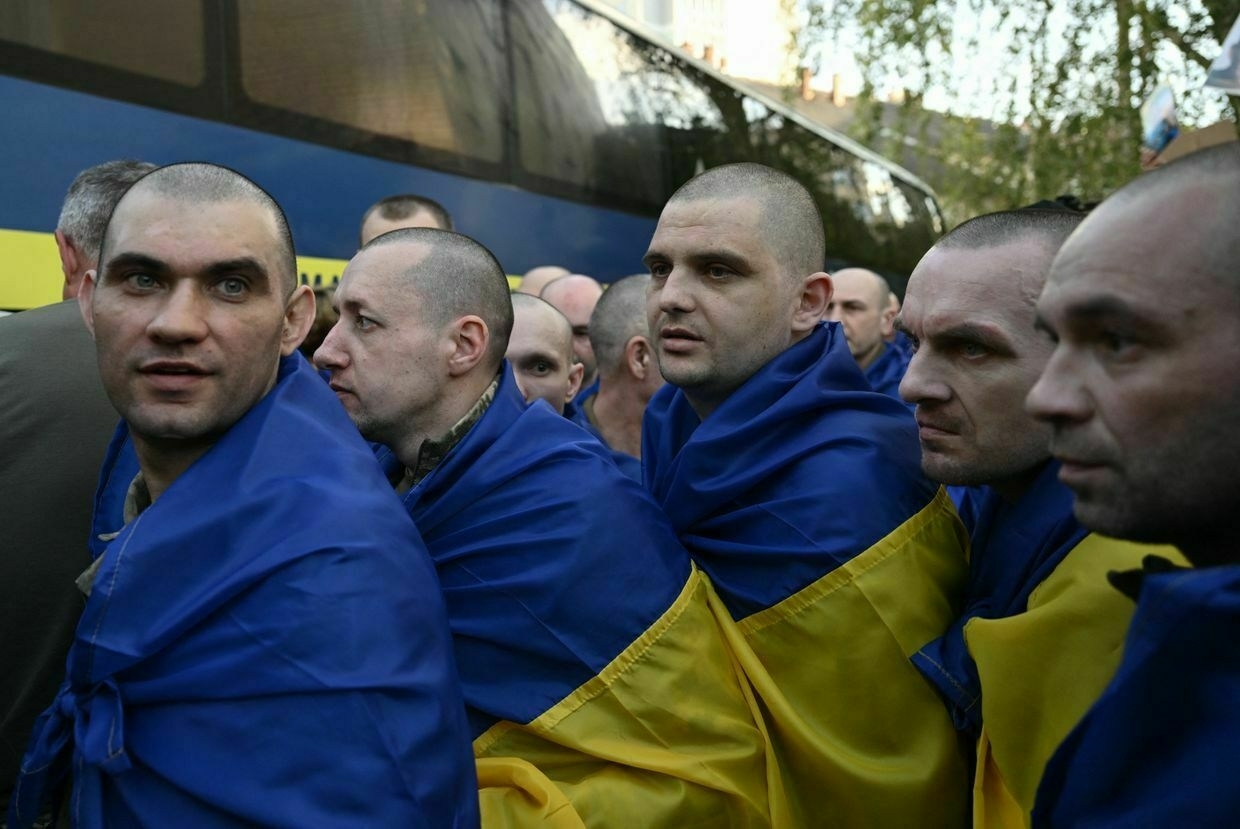
-
Russia drone strikes on Kharkiv injure 3, damage civilian buildings
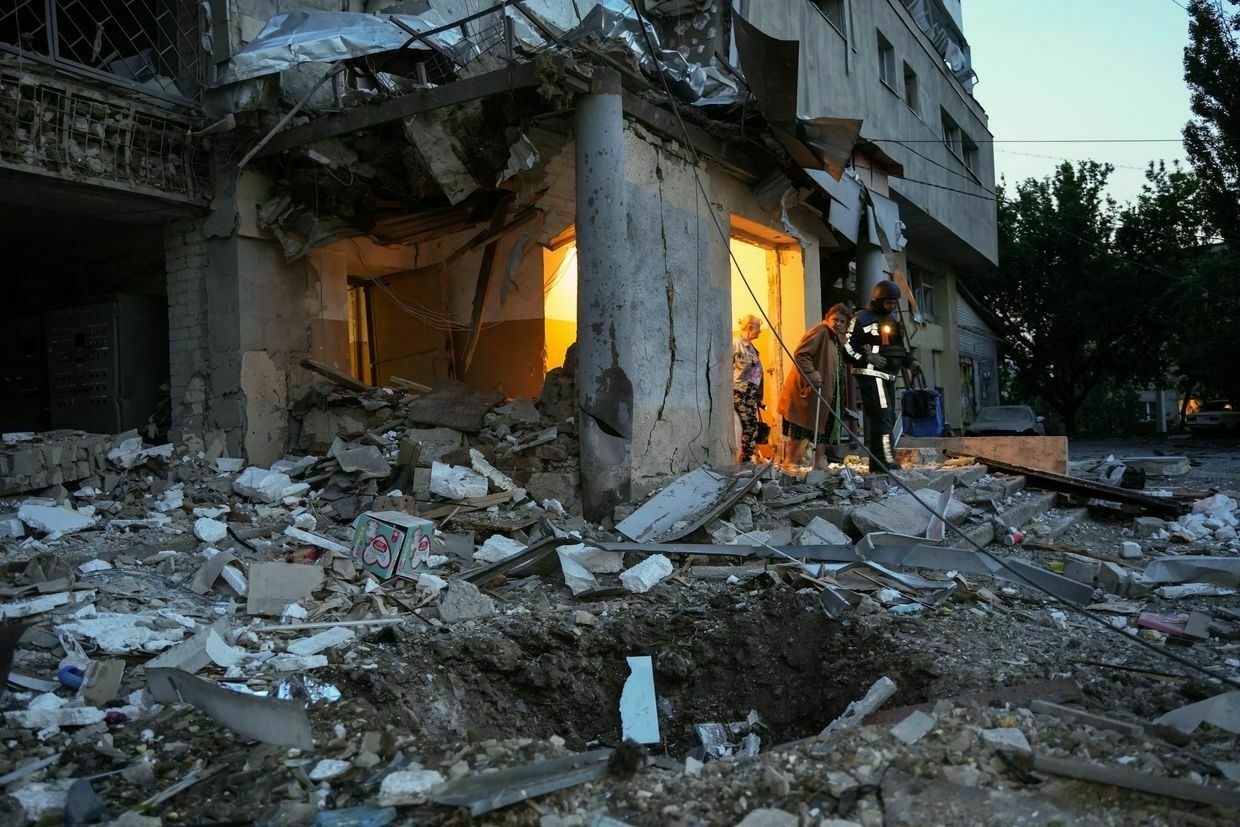
Russian forces launched a drone attack on Kharkiv overnight on June 24, injuring three people and damaging civilian infrastructure, Mayor Ihor Terekhov said.
The first explosions were reported around 2:00 a.m. local time, with three civilian injuries confirmed by 4:00 a.m., according to local officials.
Seven Iranian-made Shahed drones were launched at the city, three of which struck their targets, Terekhov said.
The strikes damaged a civilian enterprise in the Saltivka district and residential buildings in Nemyshlianskyi.
Emergency services responded to the affected sites.
In recent weeks, Moscow has been intensifying attacks against Kharkiv – Ukraine’s second-largest city – which sits just over 20 kilometers (15 miles) from the Russian border.A Russian drone attack against the city overnight on June 12 injured at least 15 people, including children.
‘Moscow is silent’ — Zelensky slams Russia’s hypocrisy over Iran strikes, own mass attack on Ukraine“After the strikes on Iran’s nuclear facilities, there was an uproar from Moscow,” President Volodymyr Zelensky said.The Kyiv IndependentAnna Fratsyvir
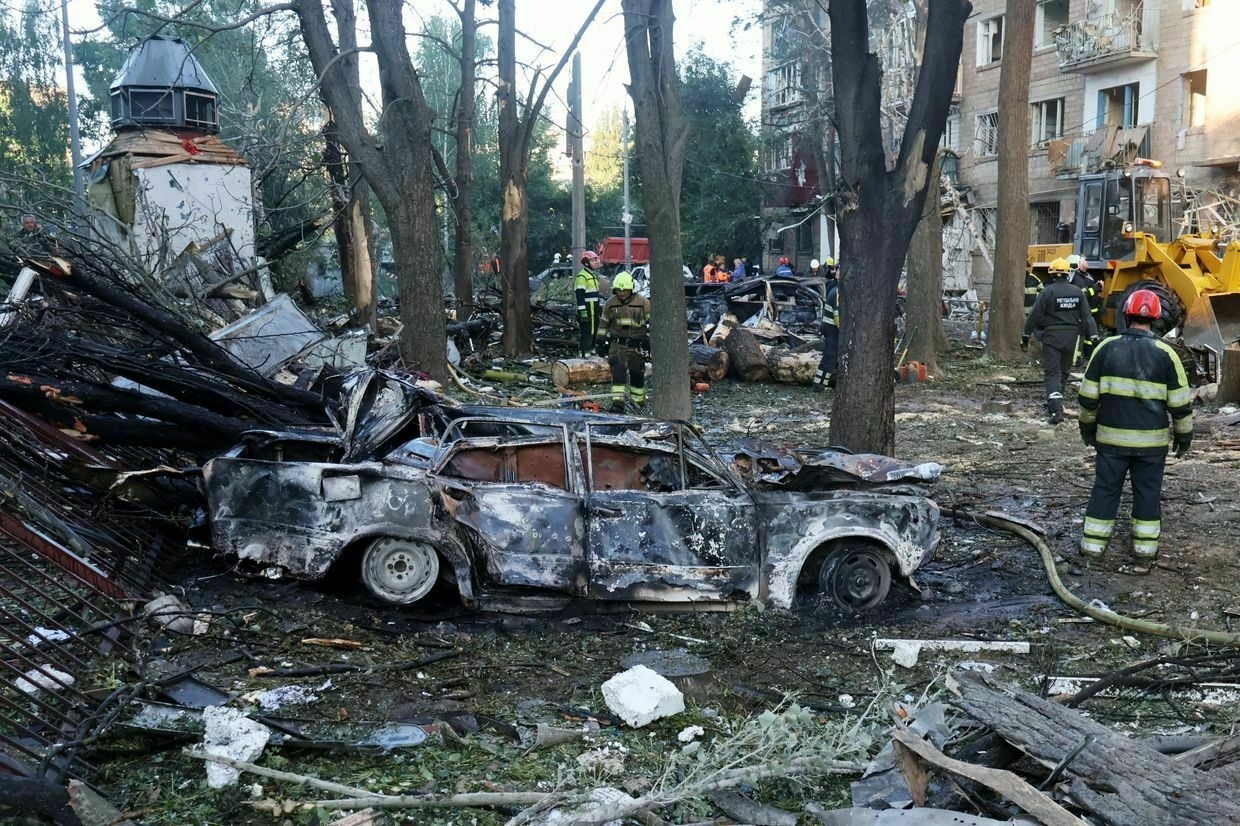
-
Serbia halts all arms exports amid scrutiny over Ukraine

Serbian President Aleksandar Vucic announced on June 23 that Serbia has halted all arms exports, citing national security and economic interests. He denied that the move was a response to mounting criticism over allegations that Serbian munitions have ended up in Ukraine.
Speaking after a meeting with senior military officials, Vucic said that Serbia is only sending ammunition to its own barracks and all exports are suspended, in line with Serbia’s best interests.
Shortly after the announcement, Serbia’s Defense Ministry issued a statement confirming the suspension of all arms and military equipment exports.
Vucic’s decisions comes amid increasing criticism – particularly following claims that Serbian ammunition has been supplied to Ukraine.
In May 2025, Russia’s Foreign Intelligence Service (SVR) accused Belgrade of supplying weapons to Kyiv, despite Serbia’s friendly ties with Moscow and declared neutrality in Russia’s invasion.
According to a 2024 investigation by the Financial Times, Serbian ammunition has made its way to Ukraine through intermediaries, although Belgrade maintains it does not directly arm either side.
Since Russia’s full-scale invasion of Ukraine in 2022, Serbia has attempted to navigate a delicate diplomatic path between Moscow and the West.
In his most recent balancing act, Vucic refused to sign a declaration condemning the invasion – so as not to “betray Russia” – while simultaneously pledging to support Ukraine’s reconstruction.
‘Moscow is silent’ — Zelensky slams Russia’s hypocrisy over Iran strikes, own mass attack on Ukraine“After the strikes on Iran’s nuclear facilities, there was an uproar from Moscow,” President Volodymyr Zelensky said.The Kyiv IndependentAnna Fratsyvir
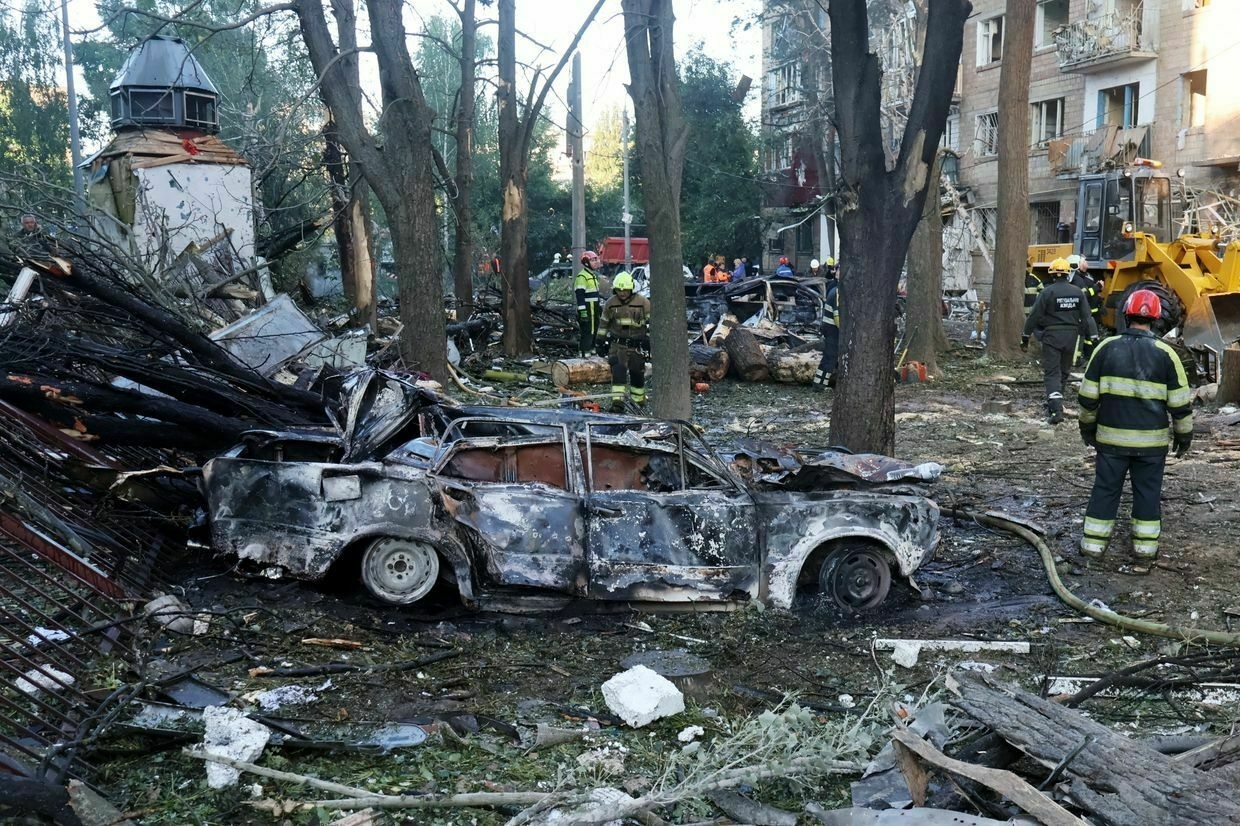
-
Russian attacks on Sumy Oblast kill 3 people, including 8-year-old boy
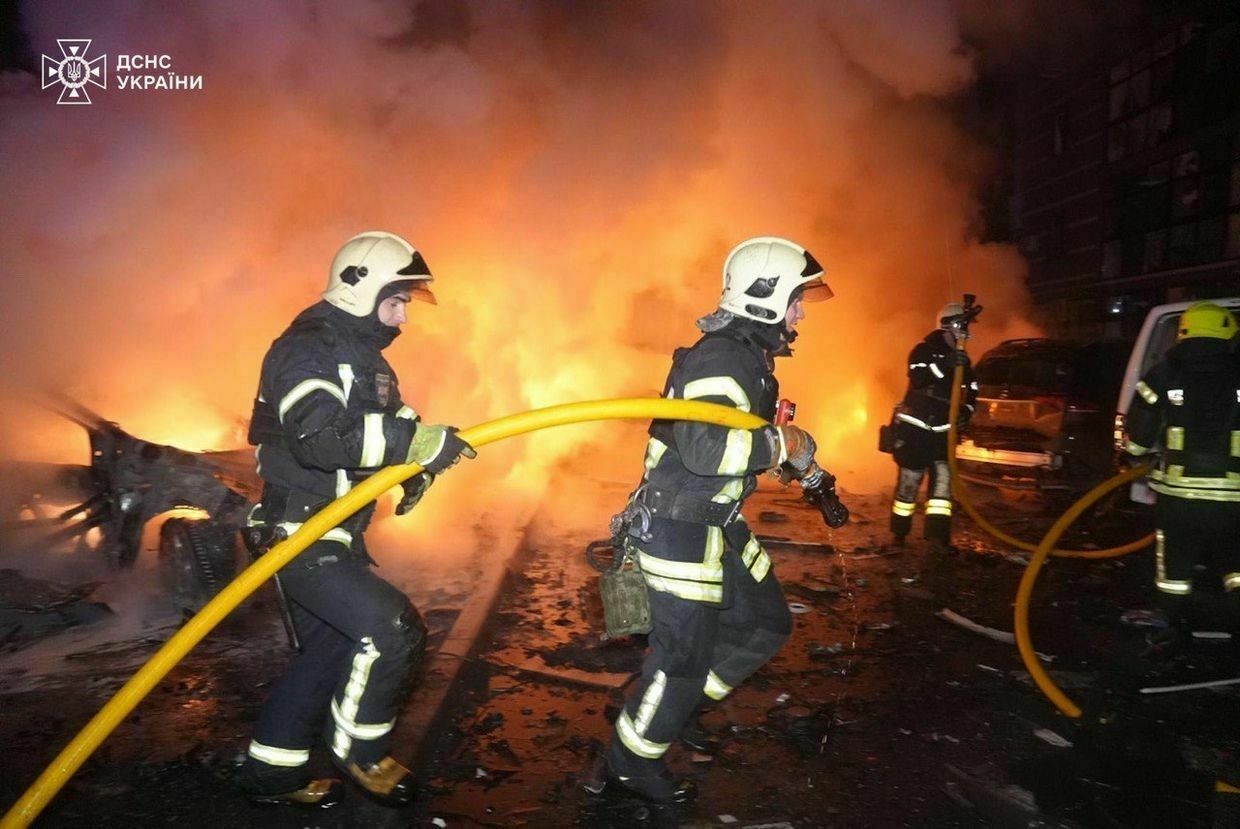
Russian forces launched a drone attack on Sumy Oblast overnight on June 24, killing three people, including an 8-year-old boy, and injuring three others, Governor Oleh Hryhorov reported.
The strike targeted a settlement near Verkhnia Syrovatka around midnight local time, Hryhorov said on Telegram. The victims included an adult man and woman, and the child.
Emergency responders pulled three more people from the rubble. All were hospitalized, with one in serious condition.
The attack damaged and destroyed homes, sparking a fire at the scene. Rescue workers, medics, and emergency services continue to operate at the scene, providing necessary assistance to those affected.
Sumy Oblast, which borders Russia, has faced intensified assaults in recent weeks amid a broader Russian offensive along Ukraine’s northeastern border.
Since March, Russian forces have reportedly captured around 200 square kilometers in the region, prompting evacuations from over 200 settlements.
Ukrainian forces, however, have been reportedly driving Russian troops back amid the continued cross-border attacks.
Ukraine war latest: ‘It was impossible to look at’ — Russian mass missile, drone attack on Kyiv kills at least 9, injures 33Key developments on June 23: * ‘It was impossible to look at’ — Russian mass missile, drone attack on Kyiv kills at least 9, injures 33 * Ukraine strikes Atlas oil depot in Russia’s Rostov Oblast, General Staff says * Ukraine returns bodies of 3 Russian soldiers repatriated as remains of Ukrainians, Interior MinistryThe Kyiv IndependentThe Kyiv Independent news desk
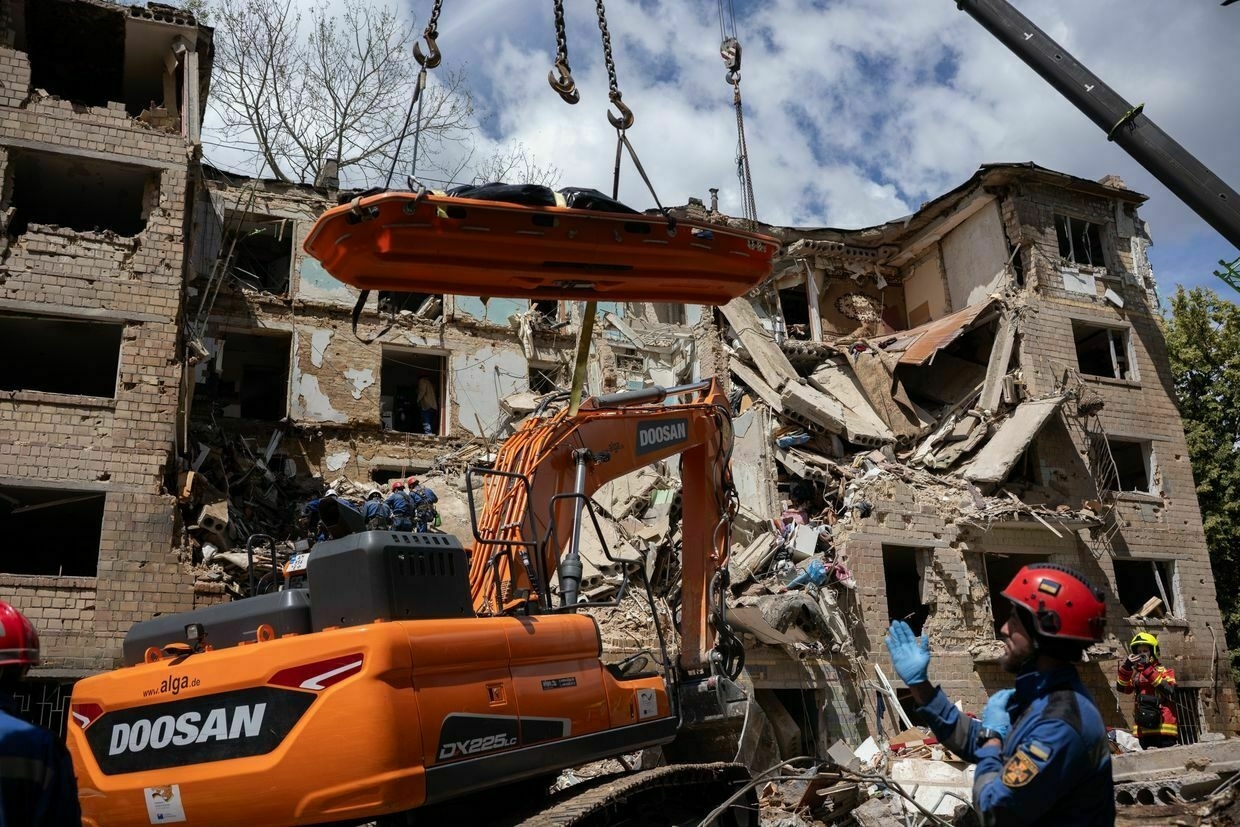
-
Zelensky, Starmer hail 'massive step forward' in military cooperation
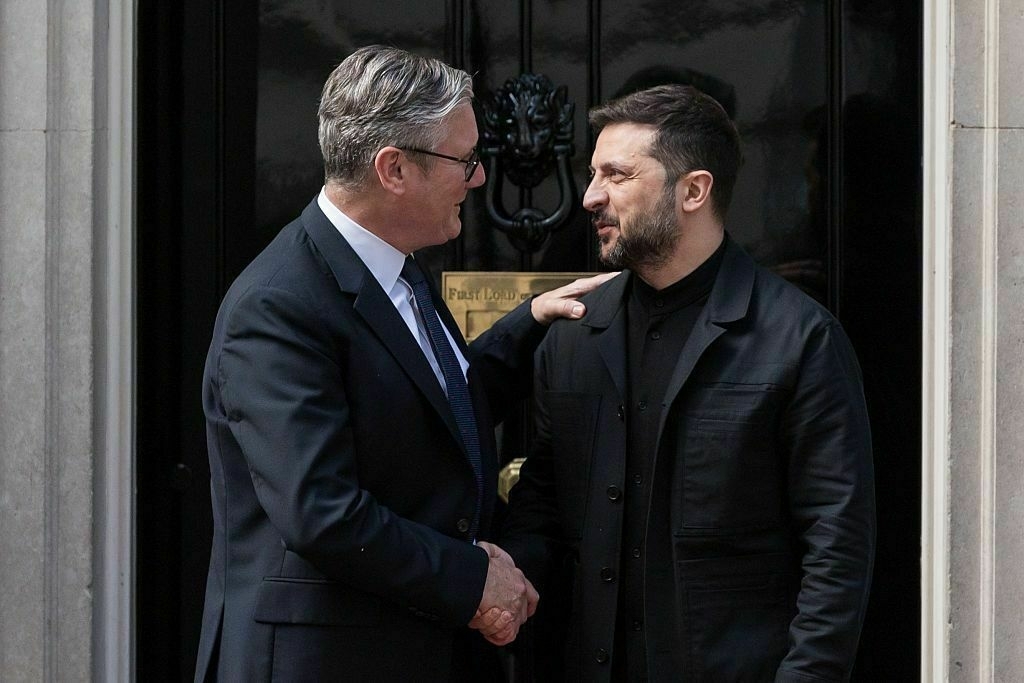
Ukrainian President Volodymyr Zelensky met with U.K. Prime Minister Keir Starmer at Downing Street on June 23, ahead of the NATO summit in The Hague.
Zelensky had earlier paid a visit to King Charles III at Windsor Castle before joining Starmer to discuss continued British support for Ukraine’s defense.
During a joint visit to a U.K. military training site for Ukrainian personnel, Starmer said he and Zelensky held “an excellent bilateral meeting” and had agreed to an “industrial military co-production agreement.” He described the deal as “a massive step forward in the contribution that we can continue to make.” Zelensky added the agreement “will be very strong and will transform both nations,” though specific details were not disclosed.
Addressing Ukrainian troops, Starmer said it was “really humbling” to witness their “level of professionalism, commitment and bravery.” Around 58,000 Ukrainian service members have been trained under the international program based in the U.K.
Zelensky thanked the U.K for its consistent backing since the start of Russia’s full-scale invasion in 2022. “We are very thankful to the UK… for such big support of Ukraine from the very beginning of this war,” he said. He noted that the UK-based training initiative has “strengthened our army” and enabled Ukraine to “survive and fight.”
The visit precedes the NATO summit in The Hague, where allies are set to unveil new defense spending targets. NATO Secretary General Mark Rutte said member states will aim to spend five percent of GDP on defense — a move he called “a quantum leap that is ambitious, historic and fundamental to securing our future.”
Under a compromise deal, members will commit to allocating at least 3.5 percent of GDP to core military expenditures and 1.5 percent to broader security areas such as cybersecurity and infrastructure.
Explained: How Ukraine and Russia swap prisoners of warEven after Ukraine cut diplomatic ties with Russia in 2022, prisoner exchanges have continued as one of the few remaining channels of communication between the two countries. Negotiated behind closed doors and carried out irregularly, POW swaps — and the decisions surrounding them — have long been shrouded in secrecy. Controversies haveThe Kyiv IndependentDaria Shulzhenko
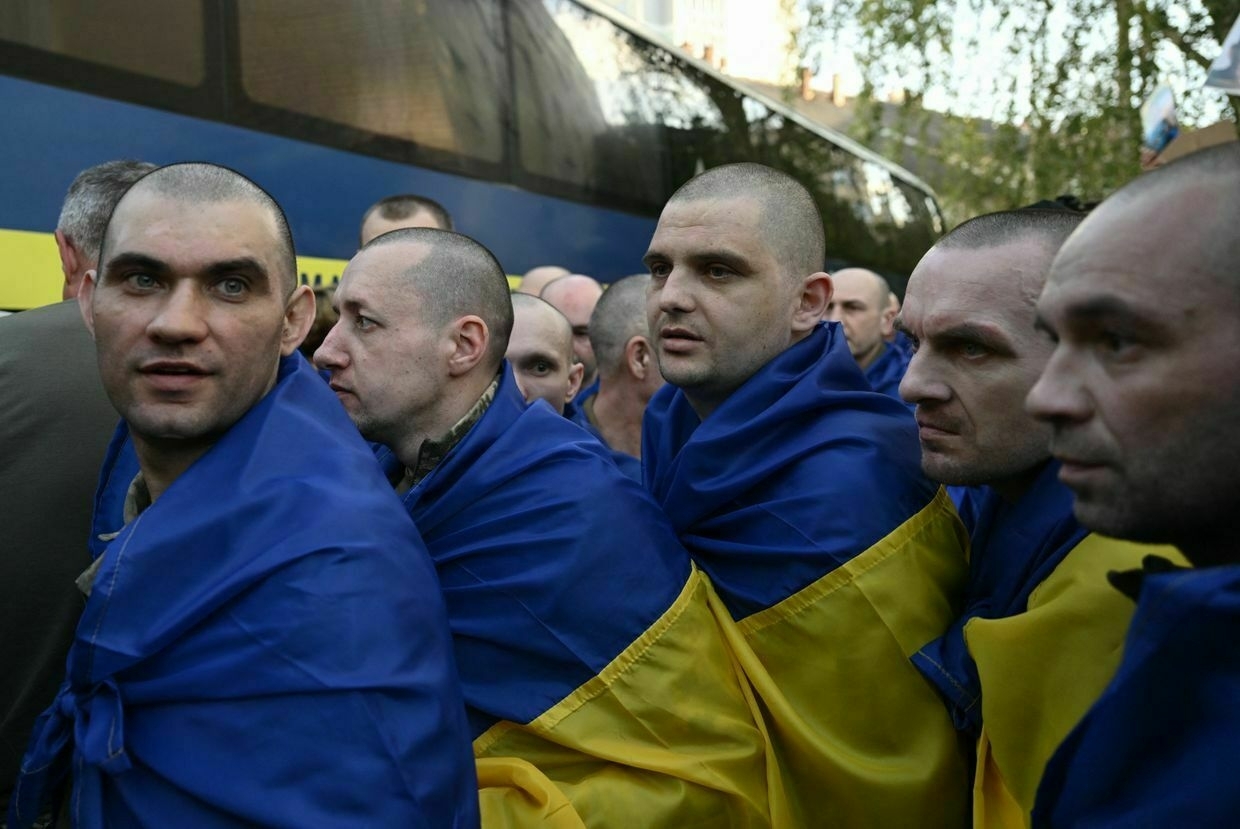
-
Ukraine war latest: 'It was impossible to look at' — Russian mass missile, drone attack on Kyiv kills at least 9, injures 33
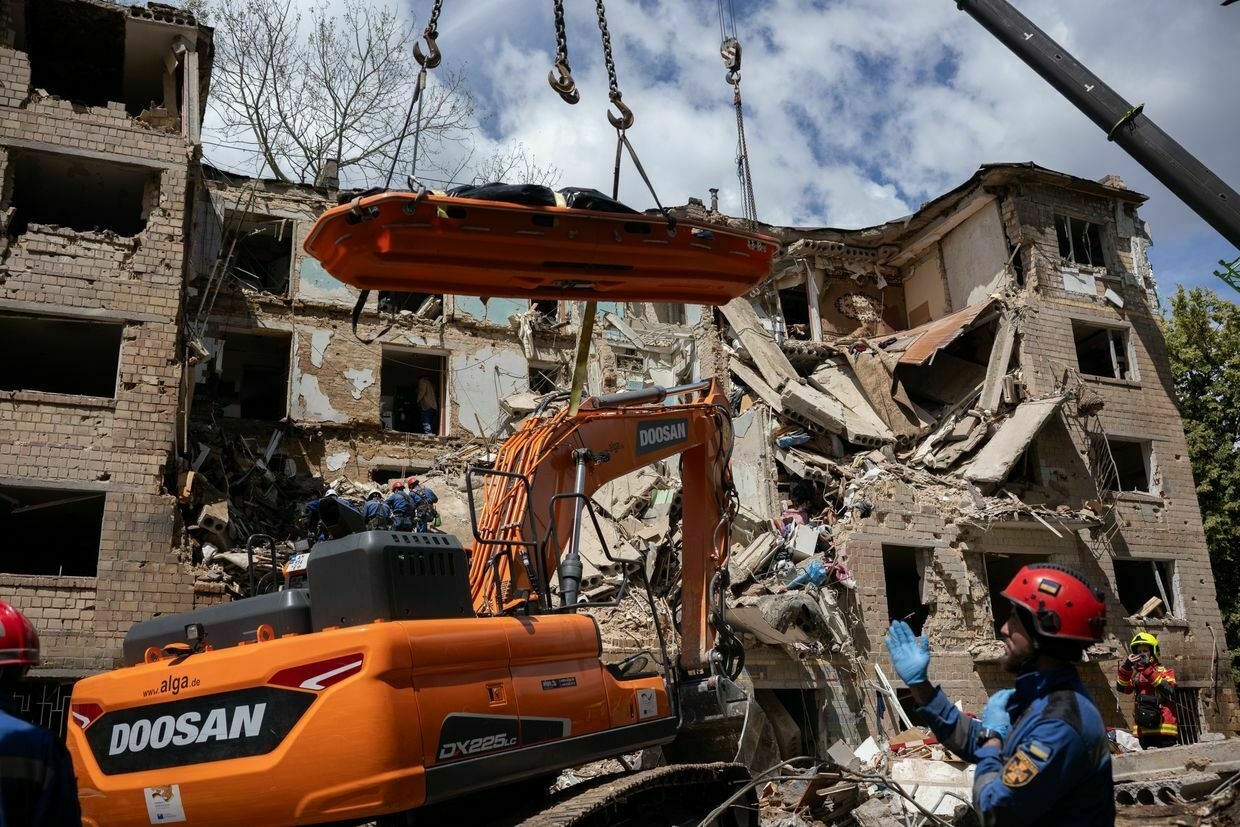
Key developments on June 23:
- ‘It was impossible to look at’ — Russian mass missile, drone attack on Kyiv kills at least 9, injures 33
- Ukraine strikes Atlas oil depot in Russia’s Rostov Oblast, General Staff says
- Ukraine returns bodies of 3 Russian soldiers repatriated as remains of Ukrainians, Interior Ministry says
- Norway’s Kongsberg opens office in Ukraine to co-produce air defense, drones
- After 40 months of waging full-scale war on Ukraine, Putin condemns ‘unprovoked aggression against Iran’
Russia launched a mass missile and drone attack on Kyiv overnight on June 23, killing at least nine people and injuring 33 others, including four children, local officials reported.
Kyiv Independent journalists heard explosions and kamikaze drones flying overhead from around 1 a.m. Louder explosions from ballistic missiles were heard an hour later, with the attack lasting around 3.5 hours in total.
The heaviest damage occurred in the Shevchenkivskyi district of the city, when a five-story building partially collapsed after being hit by a ballistic missile, Ukraine’s military reported. At least nine people died as a result.
An 11-year-old girl was confirmed as the ninth victim of the strike, Tymur Tkachenko, head of the Kyiv City Military Administration, said. Her mother’s body was recovered earlier from the rubble.
0:00/The scene of the damaged building in Shevchenkivskyi district (Vitalii Klitschko/Telegram) Casualties were also reported in other areas around the capital in Kyiv Oblast, including Bucha, a town just northwest of Kyiv.
According to the Ukrainian Air Force, Russia deployed 368 aerial weapons, including 352 attack drones, 11 Iskander-M/KN-23 ballistic missiles, and 5 Iskander-K cruise missiles, striking primarily Kyiv. Ukraine’s air defenses destroyed 354 of them.
President Volodymyr Zelensky condemned the attack, noting that while Moscow had previously criticized strikes on Iran’s nuclear program, it remained silent following its own “cynical” bombardment of Kyiv with Shahed drones and missiles.
The attack on the capital comes just days after Russia launched one of its largest attacks on Kyiv, killing 28 people and injuring 134 others.
Russia’s latest round of large-scale attacks comes as Commander-in-Chief Oleksandr Syrskyi warned on June 21 that Russian forces are attempting to advance along almost the entire front in eastern Ukraine while trying to establish a buffer zone in northeastern Sumy Oblast.
Explained: How Ukraine and Russia swap prisoners of warEven after Ukraine cut diplomatic ties with Russia in 2022, prisoner exchanges have continued as one of the few remaining channels of communication between the two countries. Negotiated behind closed doors and carried out irregularly, POW swaps — and the decisions surrounding them — have long been shrouded in secrecy. Controversies haveThe Kyiv IndependentDaria Shulzhenko
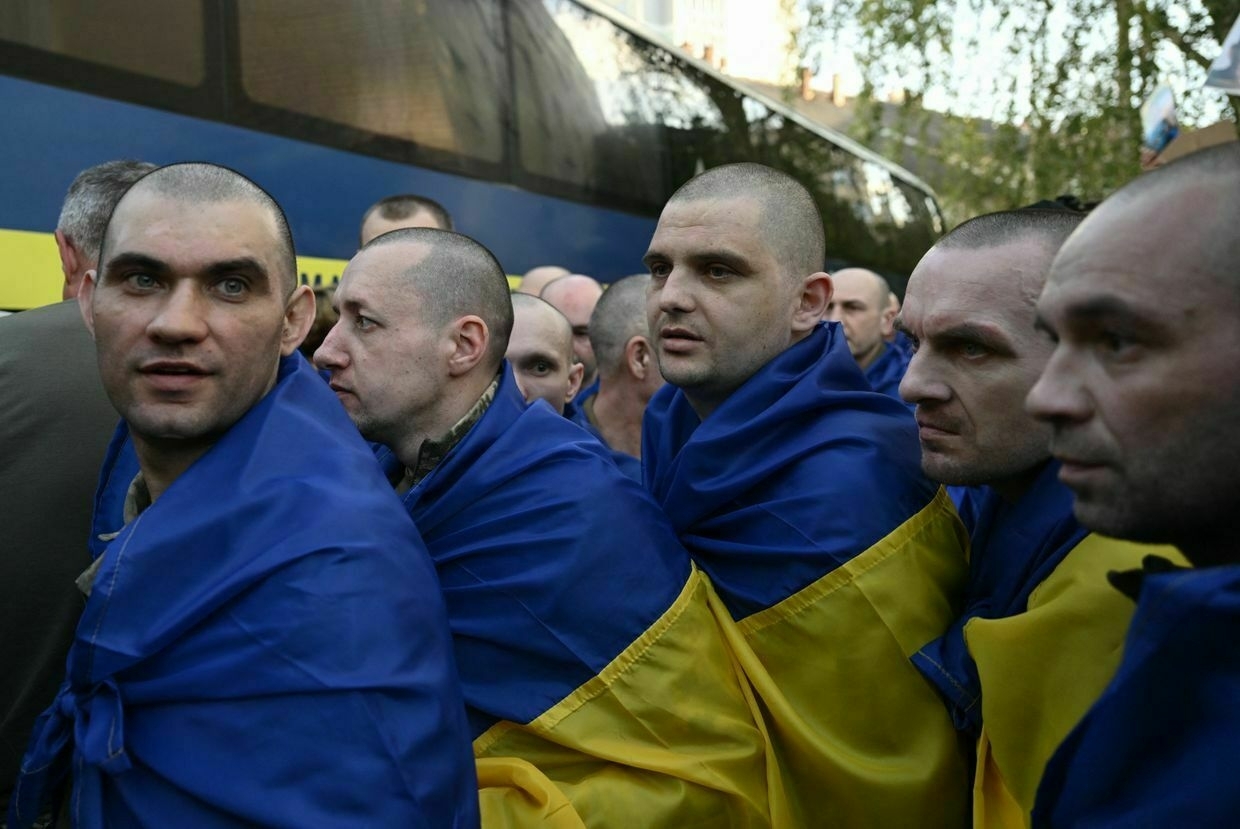
Ukraine strikes Atlas oil depot in Russia’s Rostov Oblast, General Staff saysUkraine’s Armed Forces struck the Atlas oil depot in Russia’s Rostov Oblast overnight on June 23, the General Staff reported.
The attack ignited a fire at the site, with Ukrainian forces saying the strike had reached its intended target. The facility supplies fuel and lubricants to Russian military units.
Yuri Slyusar, the acting governor of Rostov Oblast, confirmed that a fire occurred at an industrial facility after the attack. He added that no one was injured.
The full extent of the damage is still being assessed, according to the military.
Located near the Azov Sea and bordering Ukraine, Rostov Oblast plays a crucial logistical role for Russia’s war effort due to its proximity to front-line operations. The same depot was previously targeted in November 2024.
“The defense forces continue to take all measures to undermine the military and economic potential of the Russian occupiers and force the Russian Federation to stop its armed aggression against Ukraine,” the General Staff said.
The strike is part of Ukraine’s broader campaign aimed at disrupting Russian supply chains and degrading its capacity to sustain the full-scale invasion.
Fuel depots, rail infrastructure, and ammunition stockpiles inside Russia and occupied territories have increasingly become targets for long-range drone and missile strikes.
Exclusive: Ukrainian deputy prime minister suspected of corruption says he won’t step downUkrainian minister and deputy Prime Minister Oleksii Chernyshov has been formally named a suspect in a high-profile illegal land grab case, becoming the highest-ranking official in Ukrainian history to face such charges.The Kyiv IndependentDominic Culverwell
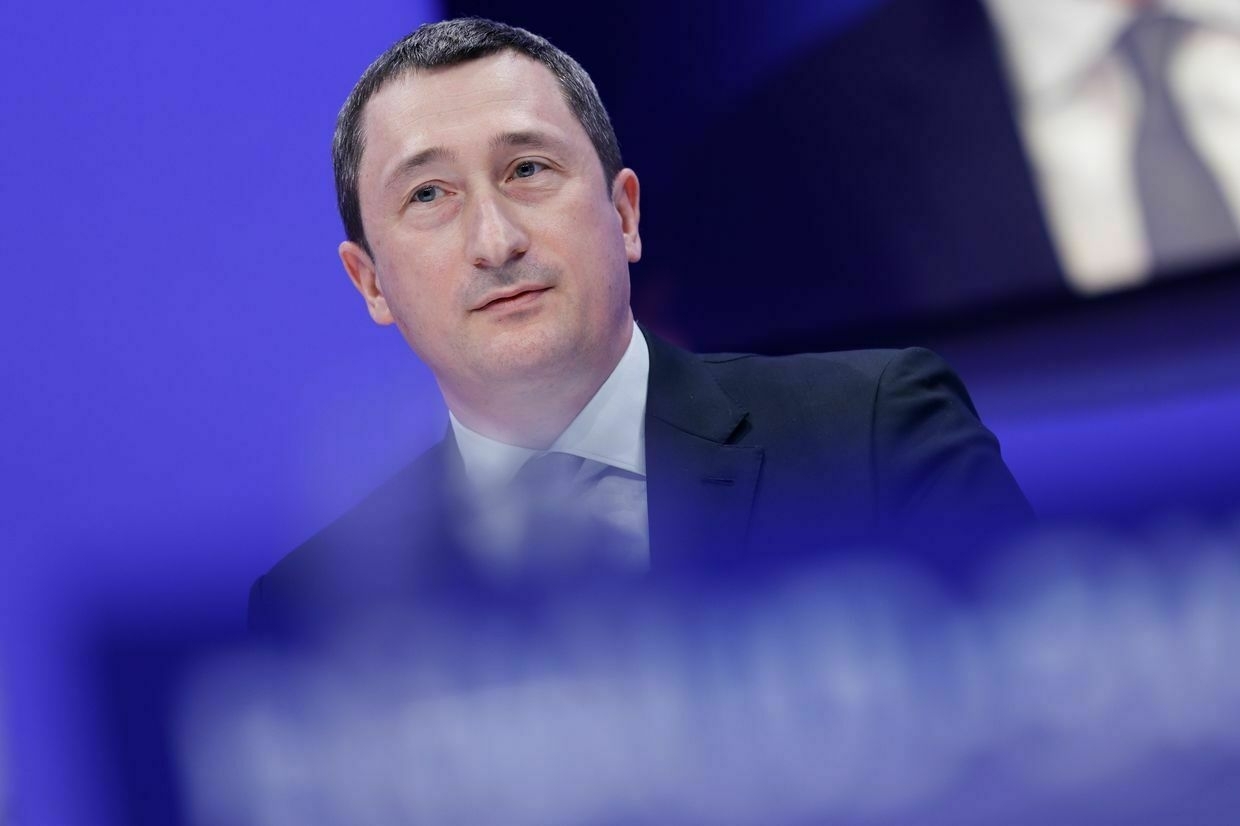
Ukraine returns bodies of 3 Russian soldiers repatriated as remains of Ukrainians, Interior Ministry saysUkraine has returned the remains of three Russians who were handed over to Kyiv as part of an exchange of fallen soldiers' bodies, Interior Minister Ihor Klymenko told Interfax Ukraine on June 23.
Ukraine has said the practice of passing off the bodies of Russian soldiers as Ukrainian is part of an attempt to obscure the scale of its military losses from the Russian public, and at least 20 such incidents have been recorded during recent repatriations conducted under the Istanbul agreements.
Russia did not comment on the discovery made by the Ukrainian side, while Klymenko said during a press conference on June 23 that it could be done to “sow chaos” during the identification of the soldiers' bodies.
Personal badges, chevrons, documents, military uniforms elements, and footwear typical of the Russian Armed Forces were found during the bodies' examination, transferred by Russia to Ukraine, Ukraine’s Interior Ministry said.
According to Klymenko, the bodies were transferred to Russia after confirmation that they belonged to Russians. The other 17 bodies have not yet been handed over to Moscow, as examinations continue.
“We are waiting for the DNA of relatives. Therefore, we want the relatives (of Russians) to submit their DNA so that we can confirm,” Klymenko told Interfax Ukraine. “I gave an order to prohibit the release of these bodies to the Russians until there is a 100% confirmation."
The Interior Ministry’s experts conduct up to 10,000 examinations per month to identify individuals, and one fragment of remains can be examined up to five times, Klymenko said.
“The bodies of our heroes come back extremely mutilated. There are objective reasons for this, such as an ongoing war and widespread use of weapons. At the same time, we have recorded cases when the remains of one person were returned during different stages of repatriation, which complicates our work,” Klymenko said.
The June 2 negotiations in Istanbul resulted in the most expansive prisoner and body exchange agreement of the full-scale war, although no ceasefire was reached.
Ukraine received a total of 6,057 bodies of its fallen soldiers as part of the phased exchange. Russia, according to Kremlin aide and negotiator Vladimir Medinsky, took back 78.
Explaining the difference between the two numbers, President Volodymyr Zelensky on June 20 said that the bodies of the vast majority of Russian soldiers currently killed on the battlefield remain in Russian hands.
“They were advancing, and their dead remained in the territory where they were,” he said.
Russia accused Kyiv on June 7 of rejecting a proposed body return, publishing footage allegedly showing Ukrainian corpses stored in refrigeration units. Ukraine dismissed the claims, saying the footage was filmed on Russian territory, not at a designated handover site.
Kyiv has consistently called for an “all-for-all” exchange of prisoners of war, but Moscow has so far refused to agree to a comprehensive swap.
Russia seeks to advance along almost entire eastern front, Ukraine holding ground in Kursk Oblast, Syrskyi saysAs of mid-June, Ukrainian defenders are fighting close to 695,000 Russian troops in Ukraine across a 1,200-kilometer (750-mile) front, Commander-in-Chief Oleksandr Syrskyi said.The Kyiv IndependentMartin Fornusek
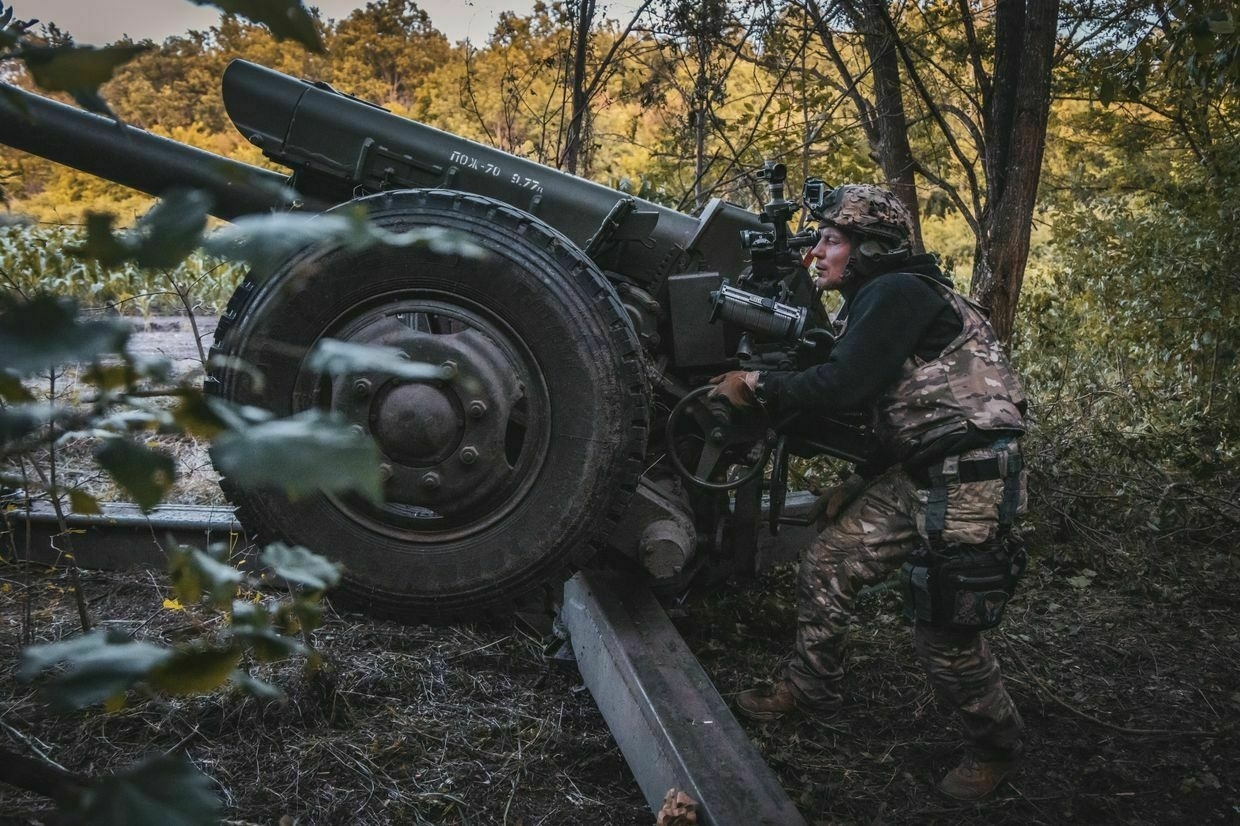
Norway to invest $400 million in Ukraine’s drone, air defense missile productionNorway will invest $400 million in Ukraine’s defense industry to support drone and air defense missile production, President Volodymyr Zelensky said in his nightly address on June 22.
The announcement followed a visit to Ukraine by Norwegian Defense Minister Tore Onshuus Sandvik.
“Today, Norway’s defense minister visited Ukraine. A decision has been reached to invest $400 million in our production – new funding, primarily for drones,” Zelensky said.
Zelensky added that the two countries are also working together to establish joint air defense production inside Ukraine.
“We are working together to create all the necessary conditions to produce air defense systems in Ukraine — jointly with partners, jointly with Norway,” Zelensky said.
He added that Norway’s largest defense company – Kongsberg Defence & Aerospace – has already opened an office in Ukraine as part of the cooperation.
“We are expediting all processes to the maximum extent,” Zelensky said.
On X, Norway’s defense ministry confirmed that Kongsberg has signed agreement with a major Ukrainian company to jointly develop and produce missiles for air defense systems in Ukraine.
The collaboration will focus on producing missiles for the National Advanced Surface-to-Air Missile System, or NASAMS.
“The Norwegian NASAMS system saves lives in Ukraine every day, and is crucial in protecting critical infrastructure. That is why it is important for the Norwegian Government to finance this development of cheaper missiles for the NASAMS system in Ukraine,” said Minister Sandvik.
The announcement marks deepening ties between Kyiv and Oslo as Ukraine seeks to expand its domestic defense industry amid Russia’s ongoing full-scale invasion and reduced military aid from the United States.
Ukraine has evidence Russia prepares military operations in Europe, Zelensky says“We are observing a continued intellectual decline within the Russian leadership and have evidence that they are preparing new military operations on European territory,” President Volodymyr Zelensky said.The Kyiv IndependentNatalia Yermak
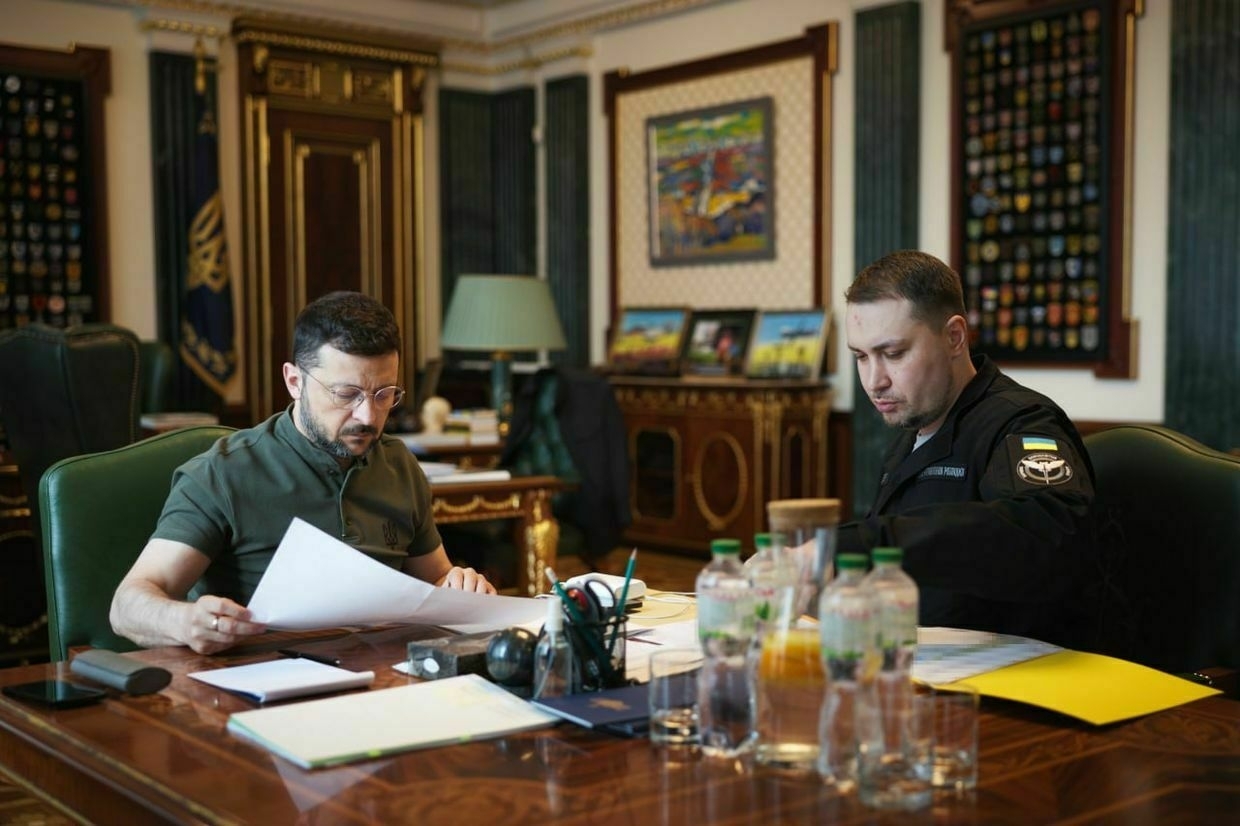
After 40 months of waging full-scale war on Ukraine, Putin condemns ‘unprovoked aggression against Iran’Russian President Vladimir Putin has condemned U.S. strikes on Iran as “completely unprovoked aggression,” more than three years into his completely unprovoked full-scale invasion of Ukraine.
Putin made the comments at the Kremlin during a meeting with Iran’s Foreign Minister Abbas Araghchi on June 23, after U.S. President Donald Trump’s announcement of successful air strikes on three nuclear facilities in Iran, Fordow, Natanz, and Esfahan, conducted in coordination with Israel over the weekend.
“The completely unprovoked aggression against Iran has no basis and no justification,” Putin said, adding that Russia “is making efforts to provide assistance to the Iranian people."
Since Russia launched its full-scale invasion of Ukraine, Moscow has killed tens of thousands of Ukrainian civilians, and the true extent of the death toll is simply not known.
Russia’s full-scale invasion of Ukraine was a clear and direct violation of both international law and the UN Charter.
Earlier on June 23, President Volodymyr Zelensky on highlighted Russia’s hypocrisy for describing U.S. strikes on Iran as “grossly violating international law” just hours before launching yet another deadly mass missile and drone strike on Ukraine.
“After the strikes on Iran’s nuclear facilities, there was an uproar from Moscow,” Zelensky said.
“The Russian leadership demonstratively condemned the ‘missile and bomb’ actions. Today, Moscow is silent — after its own army launched a cynical attack using Russian-Iranian ‘Shaheds’ and missiles on civilian infrastructure in Kyiv and other cities."
Moscow on June 22 condemned the recent U.S. strikes against Iranian nuclear facilities.
“The irresponsible decision to subject the territory of a sovereign state to missile and bomb strikes, no matter what arguments are used, is grossly violating international law, the U.N. Charter, and the resolutions of the U.N. Security Council,” the Russian Foreign Ministry said in a statement.
Overnight on June 23, a devastating Russian missile and drone strike on Kyiv killed at least 7 people and injured dozens more, including children.
The attack was one of the largest air assaults on the capital this year, with 368 aerial weapons launched, including 159 Iranian-made Shahed drones and 16 missiles, according to Ukraine’s Air Force.
Russia has deepened military and political ties with Tehran since, and Iran has supplied Moscow with thousands of Shahed-type attack drones used in routine strikes on Ukrainian cities, as well as short-range ballistic missiles.
Russia and Iran have cooperated to develop their own nuclear programs as both countries face Western sanctions. Russia supplied Iran with the Middle East’s first nuclear power plant despite objections from the West.
Note from the author:
Ukraine War Latest is put together by the Kyiv Independent news desk team, who keep you informed 24 hours a day, seven days a week. If you value our work and want to ensure we have the resources to continue, join the Kyiv Independent community.
-
Right Sector Paramilitary Wing Resumes Operations
In recent weeks, a notable development has taken place within the Right Sector and its formerly prominent paramilitary wing, the Ukrainian Volunteer Corps. Right Sector has officially announced the revival…
-
UKRAINE COUNTEROFFENSIVE: Armed Forces liberate Sumy oblast and switch to corps system | NEWS PULSE
-
Ukraine strikes Atlas oil depot in Russia's Rostov Oblast, General Staff says
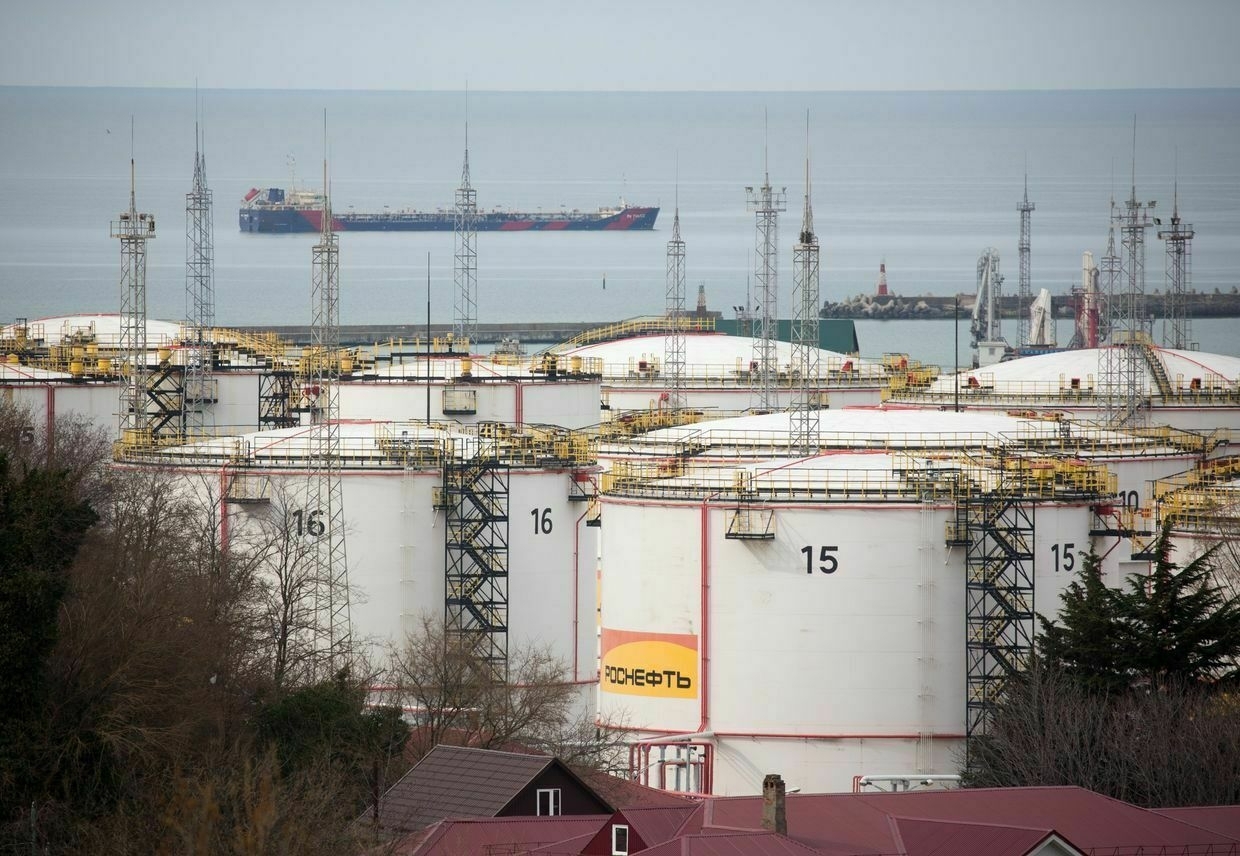
Ukraine’s Armed Forces struck the Atlas oil depot in Russia’s Rostov Oblast overnight on June 23, the General Staff reported.
The attack ignited a fire at the site, with Ukrainian forces saying the strike had reached its intended target. The facility supplies fuel and lubricants to Russian military units.
Yuri Slyusar, the acting governor of Rostov Oblast, confirmed that a fire occurred at an industrial facility after the attack. He added that no one was injured.
The full extent of the damage is still being assessed, according to the military.
Located near the Azov Sea and bordering Ukraine, Rostov Oblast plays a crucial logistical role for Russia’s war effort due to its proximity to front-line operations. The same depot was previously targeted in November 2024.
“The defense forces continue to take all measures to undermine the military and economic potential of the Russian occupiers and force the Russian Federation to stop its armed aggression against Ukraine,” the General Staff said.
The strike is part of Ukraine’s broader campaign aimed at disrupting Russian supply chains and degrading its capacity to sustain the full-scale invasion.
Fuel depots, rail infrastructure, and ammunition stockpiles inside Russia and occupied territories have increasingly become targets for long-range drone and missile strikes.
Explained: How Ukraine and Russia swap prisoners of warEven after Ukraine cut diplomatic ties with Russia in 2022, prisoner exchanges have continued as one of the few remaining channels of communication between the two countries. Negotiated behind closed doors and carried out irregularly, POW swaps — and the decisions surrounding them — have long been shrouded in secrecy. Controversies haveThe Kyiv IndependentDaria Shulzhenko
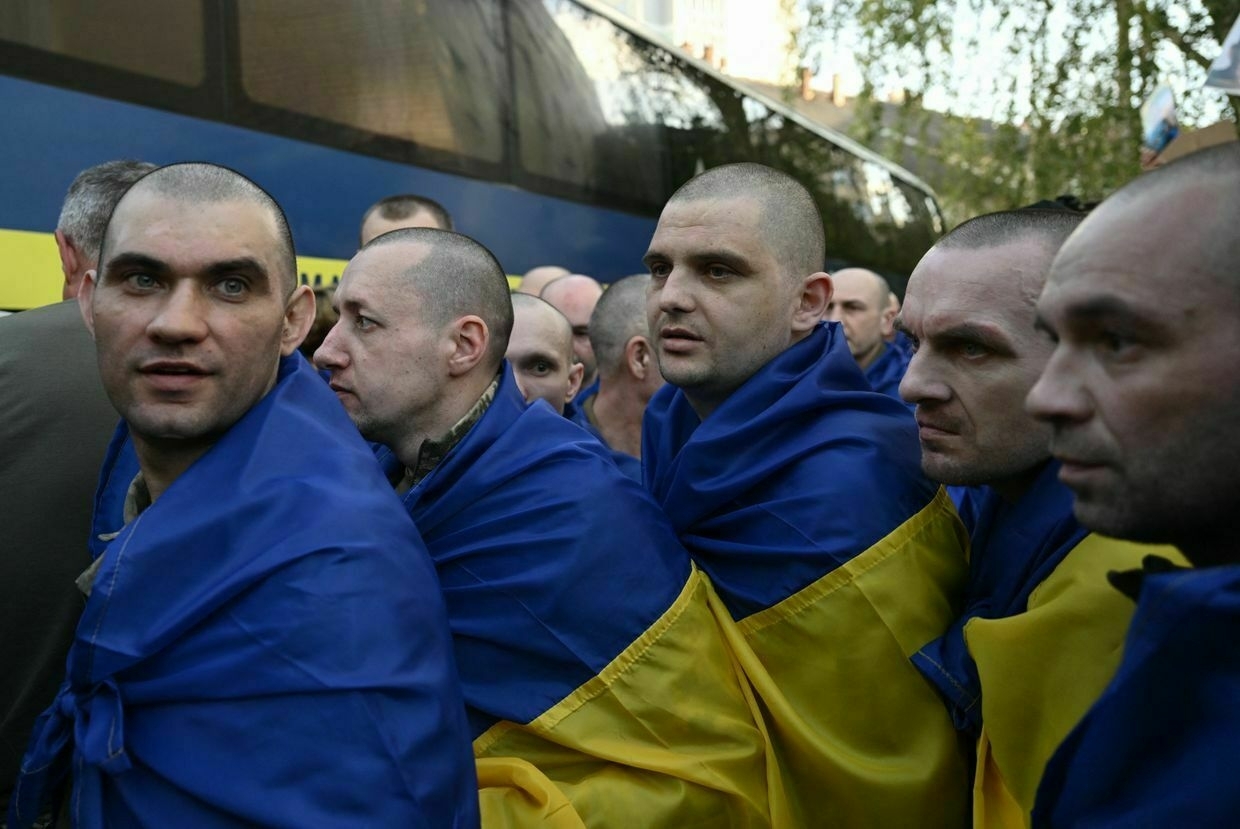
-
Iran fires missiles at US bases in Qatar, Iraq amid growing conflict
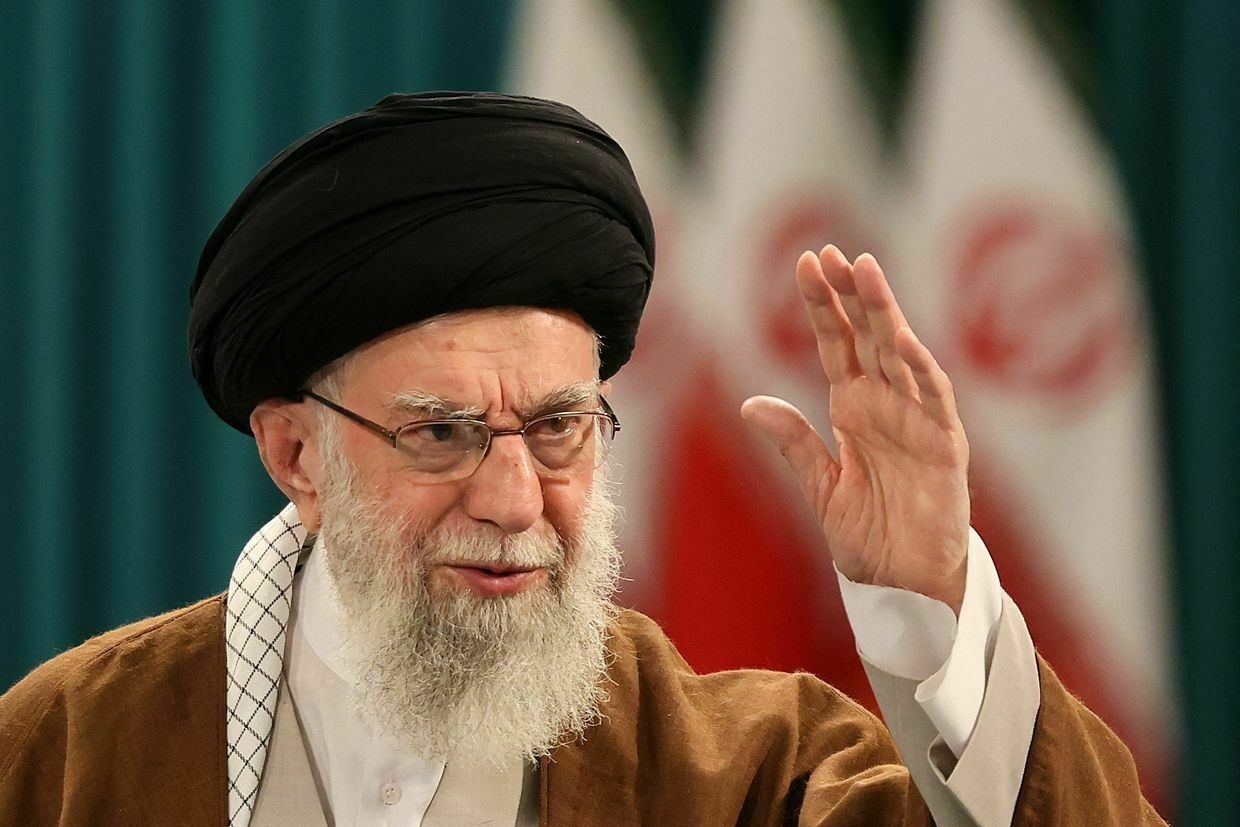
Editor’s note: This story is being updated.
Iran launched multiple missiles at U.S. military bases in the Middle East, targeting sites in Qatar and Iraq, a day after the U.S. conducted air strikes on nuclear sites in Iran.
At least 10 missiles were reportedly fired at the Al Udeid Air Base in Qatar and at least one toward a base in Iraq, Axios reported, citing an Israeli source.
The U.S. Defense Department confirmed that Iran launched several short- and medium-range missiles at Al Udeid Air Base, the New York Times reported.
According to the Pentagon, there have been no reports of American casualties.
“We neither initiated the war nor wanted it, but we will not leave the aggression against the great Iran unanswered,” Iranian President Masoud Pezeshkian wrote on X.
Iran’s targeting of U.S. assets marks a dangerous widening of the conflict, raising fears of further destabilization in the region.
The missile strikes come in response to the June 21 U.S. air campaign that targeted three nuclear facilities in Iran — Fordow, Natanz, and Esfahan — as Washington joined Israel’s military operation against Tehran’s nuclear program.
The escalation follows Israel’s June 13 attack that prompted Iran to retaliate with missile attacks on Tel Aviv and other cities, killing multiple civilians, including five Ukrainian citizens.
Iran is a key supplier of weapons to Russia, including Shahed-type drones and ballistic missiles used in attacks on Ukrainian cities. Israel, which hosts a significant Russian-speaking population, has not joined Western sanctions against Moscow.
On June 13, Kyiv expressed concern over the security situation in the Middle East, describing Tehran as a “source of problems” in the region and beyond.
‘It was impossible to look at’ — Russian mass missile, drone attack on Kyiv kills at least 9, injures 33Russia launched a wave of missile and drone attacks on Kyiv and surrounding region overnight on June 23.The Kyiv IndependentLucy Pakhnyuk
